Mark Sisson's Blog, page 24
May 27, 2022
New and Noteworthy: What I Read This Week—Edition 179

Research of the Week
Among patients with invasive breast cancer, metformin does not seem to help.
“Long COVID” doesn’t appear on any blood tests.
Resistance training and mortality.
The gut regulates emotions in women.
New Primal Kitchen PodcastsPrimal Kitchen Podcast Episode 30: Kelly Leveque on Weight Loss, Blood Sugar, Cancer and Pediatric Nutrition e
Primal Health Coach Radio: Kimberly Spencer
Media, Schmedia“Medical breakthroughs” on social media versus in reality.
Interesting Blog PostsFor a little while, New York was oyster heaven on Earth.
Grass is the crop, cattle the combines.
Social NotesWhat’s the worst that can happen?
Everything ElseIs it really the answer?
Is this the oldest tree in the world?
Things I’m Up to and Interested InUncharted territory: Genetic embryo testing (and selection) is here.
Good idea: Walking groups for men (and women, for that matter).
Interesting article: On rebound COVID after using Pavloxid.
Unsurprising: More eggs, less metabolic syndrome.
Question I’m AskingWhat are your summer goals?
Recipe CornerI prefer just eating them plain and raw but this is a good sugar snap pea recipe.Nigerian pepper soup.Time CapsuleOne year ago (May 21 – May 27)
The Real Mediterranean Diet—The real Med diet hasn’t been tried.Foot Health for Better Ankles, Knees, Hips and Back (Plus 7 Foot-Strengthening Exercises You Can Do Anywhere) —Keep it strong down there.Comment of the Week
“i hate small talk, i do not see any use in it….”
-Try asking questions. Better way to frame it.
(function($) { $("#dfBOQ4i").load("https://www.marksdailyapple.com/wp-ad..." ); })( jQuery ); 
The post New and Noteworthy: What I Read This Week—Edition 179 appeared first on Mark's Daily Apple.


May 26, 2022
Do You Sit All Day? Here Are 5 Mobility Exercises You Should Be Doing!
Hi, folks! Enjoy this guest post from my pal Ryan of GMB fitness in which he covers a topic near and dear to my heart: mobility exercises and undoing some of the negative effects of a too-sedentary lifestyle. Take it away, Ryan.
 The unfortunate truth of modern life is many of us sit for too long during the day. This is mostly due to office culture that requires us to stay at a desk to get our work finished—even if we work from home. And while you might be combatting this with regular breaks, walks across the office, or even fancy ergonomic chairs and standing desks, it might not be enough to maintain a healthy range of motion throughout your joints.
The unfortunate truth of modern life is many of us sit for too long during the day. This is mostly due to office culture that requires us to stay at a desk to get our work finished—even if we work from home. And while you might be combatting this with regular breaks, walks across the office, or even fancy ergonomic chairs and standing desks, it might not be enough to maintain a healthy range of motion throughout your joints.
You need mobility exercises designed to combat all that sitting.
If you’re making time to move and exercise regularly, you know how important your hip, shoulder, and ankle mobility is for deep squats, pullups, lunges, and other full-body movements. Over time, if you’re not actively working on improving and maintaining mobility, it’s easy to lose. Fortunately, we can keep a healthy, functional range of motion starting with these five mobility exercises you can do anywhere.
1. Backward Facing Wrist Flexor StretchThis stretch will help open up your forearms and wrists after long days of typing.
Kneel on a comfortable surface. Put your hands on the ground in front of you, rotating your wrists around so that your fingers point toward your knees.At first, start with your fingers closer to your knees (this is easier if you’re especially stiff).Now with your palms flat on the floor, ease your butt back toward your heels, then pulse toward your hands. That’s one rep.Do 10 total reps and hold for 10 seconds on the last one.
See the full movement on YouTube
2. Quadruped Shoulder Protraction and RetractionThis one is good for getting some movement in your shoulders and upper back.
Begin with your hands directly under your shoulders and your knees right under your hips.
Start by letting your chest sink downward, pulling your shoulder blades together.Then reverse the movement by pressing downward and pulling your shoulder blades apart.Don’t move your hips; this is all about the upper back and shoulders.Take it slow and repeat for 10 total reps.
See the full movement on YouTube
3. Quadruped Spinal CirclesThis exercise helps open up your back and releases the spine from being in a rigid position all day.
Start on your hands, placing them directly under your shoulders like the previous exercise.
Push with your lat (the large muscle of your mid and lower back) to one side while dropping your chest.Pull your back upward and sway to the other side.Aim to make a circle with your spine while keeping your arms straight and firm on the floor.Take your time and do 5 reps in one direction, then repeat 5 reps for the other side.
See the full movement on YouTube
4. Frog StretchThis exercise helps open up your hips and groin, and gives you better squat depth.
Start on your hands and knees, bringing your knees as far apart as is comfortable.
Keep your hips between your knees and the balls of your feet on the ground with toes pointed outward.Rock back and forth in that position.Go forward and pulse for 10 reps, allowing your hips to drop steadily as you gain more range of motion. Then hold for 10 seconds.
Then push your butt back toward your feet, pulse for 10 reps and hold for 10 seconds.
See the full movement on YouTube
5. Three Point BridgeThis exercise is great for opening your hip flexors, shoulders, and chest.
Sit down with your butt on the floor, knees bent, and one arm behind you.Lift your opposite hand in the air, then flex your butt to extend your hips to the ceiling.Extend your arm back and look at your thumb to encourage full extension of the hips.Do 5 reps and then hold the final rep for 10 seconds. Focus on extending your arm that’s on the ground and feeling that stretch throughout your body. Repeat on the other side.
See the full movement on YouTube
Better Mobility Means Better Movement, Performance, and General Well-beingGetting down on the floor and knocking out mobility drills isn’t as sexy as an intense sprint workout or a bodyweight circuit that leaves you drenched in sweat. But taking the time daily, even just for 15 minutes, can do wonders for getting your body to open up and combat the stiffness that comes from sitting too long.
Plus, the 5 movements we showed you here can be used for a daily mobility practice and also as a warm-up before hard training. They are a part of GMB’s free 15-minute Mobility Boost that was created for people who get stiff and sore and want a practical solution to regain and maintain their mobility.
 After a training accident ended his competitive gymnastics career, Ryan moved to Japan and competed in various martial arts until another injury made him reevaluate his priorities in life. As Head Coach at GMB Fitness, his mission is to show everyone that you can define your own fitness as a sustainable and enjoyable part of your life. You can follow GMB Fitness on Facebook, Twitter, Instagram, and YouTube.
After a training accident ended his competitive gymnastics career, Ryan moved to Japan and competed in various martial arts until another injury made him reevaluate his priorities in life. As Head Coach at GMB Fitness, his mission is to show everyone that you can define your own fitness as a sustainable and enjoyable part of your life. You can follow GMB Fitness on Facebook, Twitter, Instagram, and YouTube.
(function($) { $("#dfb7zBE").load("https://www.marksdailyapple.com/wp-ad..." ); })( jQuery );

The post Do You Sit All Day? Here Are 5 Mobility Exercises You Should Be Doing! appeared first on Mark's Daily Apple.


May 25, 2022
Oxalate Dumping: What Do We Know?
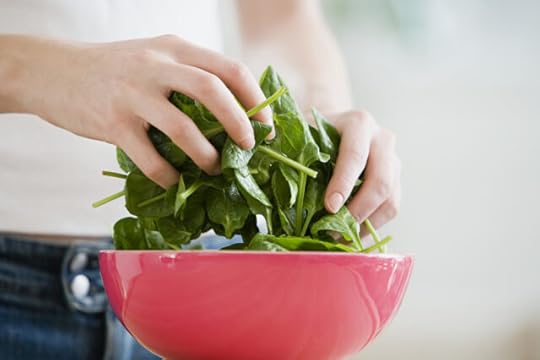 By now, you know about oxalates: plant compounds that bind with minerals like calcium and magnesium and form crystals. These crystals deposit in joints, kidneys, prostates, bladders, thyroids, the synovial fluid, and other tissues to cause pain, inflammation, and damage. Oxalate crystals have been linked to issues like kidney stones and arthritis. Many people who are experimenting with the carnivore diet are doing so at least in part to eliminate or reduce oxalates from their diet.
By now, you know about oxalates: plant compounds that bind with minerals like calcium and magnesium and form crystals. These crystals deposit in joints, kidneys, prostates, bladders, thyroids, the synovial fluid, and other tissues to cause pain, inflammation, and damage. Oxalate crystals have been linked to issues like kidney stones and arthritis. Many people who are experimenting with the carnivore diet are doing so at least in part to eliminate or reduce oxalates from their diet.
You might read about oxalates, say to yourself “I have some of those issues,” and start eliminating or reducing oxalate content in your diet by eating less (or zero) spinach, sweet potatoes, raspberries, beets, and other high-oxalate foods. But then something happens:
You get joint pain. You get fatigue. Your teeth start developing plaque. You feel stiff and achy and less mobile overall. Urination and defecation are painful, even “grainy.”
Everything was supposed to be better. These are the symptoms avoiding oxalates was supposed to improve. What’s going on?
Are You Experiencing “Oxalate Dumping?”According to the prevailing conventional alternative oxalate wisdom, you’re oxalate dumping. You stopped eating oxalates and your body responded by “dumping” all the stored oxalate from the past years of oxalate consumption. And because the oxalate was stored throughout your entire body, all your tissues are expressing them, triggering all sorts of oxalate-related symptoms. The biggest proponents of the oxalate dumping idea say that the dumping process can even be dangerous to your health and last for months or even years.
To deal with the oxalate dumping, they say you should slowly titrate down your oxalate intake rather than do a cold-turkey full elimination. Eating small to moderate amounts of oxalate-rich foods as you taper off oxalates is supposed to slow the dumping process and allow you to safely and comfortably eliminate oxalates over time.
Oxalate dumping has always stumped me, if I’m being honest. It doesn’t make intuitive sense. Why does the body immediately start “dumping” oxalate just because you stop eating any exogenous sources of it? Why does it stop dumping oxalate when you start eating more of it? What’s the mechanism here?
I’m not discounting it or saying it’s a myth. There are enough anecdotes from generally trustworthy people who say that going on a low oxalate diet caused them to start getting symptoms of what felt like oxalate excretion:
Oxalate crystals showing up on the teeth as plaque.Oxalate crystals appearing in the joints and feet.Oxalate crystals dispersing through various orifices of the body.You can look at plenty of anti-oxalate Instagram accounts with photographic evidence of some of these oxalate crystals people are apparently dumping. Sally Norton is one. I can’t verify these are accurate, but I also can’t say they’re all wrong or confused.
I place heavy emphasis on anecdotes. After all, everything you experience and can personally verify is an “anecdote.” There is real value there. We move through the world using our own “anecdotes” as guidance.
You get enough anecdotes together and have an outside party analyze and record them, and you’ve got yourself some data. But nothing qualitatively changed between the creation of the anecdote and its verification. It’s as true as it ever was. It was data before; it just wasn’t recognized as such.
But the lack of elegance of the oxalate dump theory bugs me. I need to know why it’s happening (if it’s indeed happening that way). And while I don’t have a definite answer, I have some ideas for some other things that could be happening to make the problem worse.
You might be making more oxalate.Not all oxalate comes from exogenous sources. A large amount of oxalate production—according to some sources, the majority of all oxalate we encounter—happens in the liver, and many nutrients and physiological states help determine how much oxalate we make (or don’t). After all, when someone eliminates oxalates from their diet, many other things change, too. They end up eating more of something else, or changing their diet entirely. Oftentimes they’re going carnivore and eliminating entire food groups. All of these and more can affect the rate of endogenous oxalate synthesis.
Thiamine DeficiencyThiamine, or vitamin B1, is an important nutrient for oxalate metabolism. Without adequate thiamine, we make more of and have trouble dealing with the toxin glyoxal. If we can’t metabolize enough glyoxal, much of it turns into oxalate.https://www.hindawi.com/journals/au/2...
Many diets are low in thiamine. Carnivores who eat exclusively beef, even grass-fed organic beef, and ignore all other animal foods are missing out on two of the best thiamine sources: pork and salmon.
Many common inputs lower thiamine—or, more accurately, deplete thiamine—like caffeine and alcohol.
If any of this sounds familiar, thiamine might be a good supplement for anyone suffering from oxalate dumping symptoms.
Magnesium DeficiencyMagnesium chloride has been shown to reduce urinary oxalates via at least two pathways: reducing endogenous formation of oxalates and inhibiting intestinal absorption.https://pubmed.ncbi.nlm.nih.gov/74610... All in all, it will reduce the overall oxalate load in the body.
Taking some magnesium chloride in your water, taking magnesium chloride baths, and/or applying magnesium chloride oil to your skin are probably good ideas for anyone worried about oxalate dumping. At the worst it can’t hurt and will probably help you in other areas, since magnesium is such an important mineral.
Increased Oxidative Stress and Reduced GlutathioneDepleting glutathione stores in an experimental setting raises glyoxal levels and thus oxalate levels.https://www.ncbi.nlm.nih.gov/pmc/arti... Simply put, without enough glutathione, you can’t counter the oxidative stress that’s producing glyoxal. Enough glyoxal hangs around and a bunch of it turns into oxalate.
Oxidative stress is everywhere, of course. It’s in the sleep we don’t get, the circadian rhythm we don’t honor, the exercise we don’t do, the excessive exercise we do, the polyphenols we don’t consume. So take care of those and you should reduce the amount of oxalate you produce in-house.
Excessive Fat Intake Increasing Oxalate AbsorptionFat malabsorption has the tendency to cause saponification of calcium in the digestive tract, preventing it from binding to dietary oxalates and increasing the absorption of oxalates from the diet.https://pubmed.ncbi.nlm.nih.gov/70525... If you suddenly increase your fat intake to extreme levels without adaptation, you may have trouble digesting all of it and create “fat malabsorption” conditions in your gut that leave you open to increased oxalate absorption—or “oxalate sensitivity.”
This is just speculation, of course, but it’s plausible. If you ate less oxalate but became far better at absorbing what little you ate, it could lead to a higher net absorption.
I’d like to get to the bottom of this issue, but there aren’t any specific studies looking at oxalate dumping. There’s clearly something going on here, and I hope we get more data (or at least any data) soon.
Until then, try the things I suggested, as well as the common advice of slowly rather than rapidly lowering oxalate intake.
Take care, everyone, and be sure to let me know down below your experiences with oxalates and oxalate dumping.
(function($) { $("#dfBWuJg").load("https://www.marksdailyapple.com/wp-ad..." ); })( jQuery ); 
References https://www.hindawi.com/journals/au/2012/819202/https://pubmed.ncbi.nlm.nih.gov/7461010/https://www.ncbi.nlm.nih.gov/pmc/articles/PMC4891250/https://pubmed.ncbi.nlm.nih.gov/705253/
The post Oxalate Dumping: What Do We Know? appeared first on Mark's Daily Apple.


May 24, 2022
Hindsight is 20:20 – What You Wish You Had Known Sooner
 A couple months ago, I asked the Instagram audience what they wish they had known sooner in terms of taking care of their health. I really enjoyed hearing what you all had to say, so I’m going to share some of the replies here.
A couple months ago, I asked the Instagram audience what they wish they had known sooner in terms of taking care of their health. I really enjoyed hearing what you all had to say, so I’m going to share some of the replies here.
My motivation for asking was two-fold. One was simple curiosity, the other personal. Now that I’m a grandparent, I find myself thinking more and more about how to get the Primal message out to the younger generations so don’t have to spend their middle age or retirement years trying to fix problems that could have been prevented. How can I (and indeed, all of us) support parents who want to build a solid foundation of health for their kids? What information and interventions would be the most impactful for today’s youth?
While I like to think that we’ve made a dent in the problem with Mark’s Daily Apple, Primal Blueprint, and Primal Kitchen, there’s still a lot of work to be done to improve the average person’s health. I’m sharing these responses with the hope of spurring more conversation, more brainstorming, and, dare I say, more change in the future.
Unsurprisingly, the majority of the responses I received can be summarized as, “I wish I hadn’t followed conventional wisdom.” You and me both. What’s that saying, when you know better, you do better? Live and learn. Anyway, I hope these get you thinking.
Question: “What do you wish you had known about being healthy when you were younger?”A: Eat more protein instead of carbs.
So “Meat-free Mondays” are a bad school lunch idea? (Sarcasm.)
A: Always thought processed foods were healthy.
Who can blame you? For decades, the only medical advice for people struggling with metabolic health was to lose weight by cutting calories and eating low-fat. (That still seems to be the standard rhetoric, unfortunately.) All the foods marketed to that end were uber-processed, “portion-controlled,” and not at all satiating. We were all sold the lie that these ultra-modified foods were better for us than the options nature provides. Too bad that those “diet foods” were stripped of nutrients, fiber, healthy fats, and often protein. And oh, by the way, they tend to lead to eating more calories and losing less weight.https://www.cell.com/cell-metabolism/... ">1
A: Micronutrients matter.
Again, I blame the old “a calorie is a calorie” dogma, when the diet industry tried to convince us that 100 calories from broccoli is the same as a 100 calorie snack pack of low-fat chocolate chip cookies. Micronutrients fell by the wayside as calorie counting took precedence over food quality.
A: That healthy fats are good.
Amen.
A: Meat is good for you.
Double amen.
A: That you can celebrate without food.
That’s a good one. Listen, I have no problem with food being a part of festivities. It’s been that way throughout human history, and I’ll take every opportunity to enjoy a celebratory steak dinner with friends. But I do object to how celebrations, holidays, or really any milestone have become excuses to engage in sugar-and-booze free-for-alls. Many of you can attest to the fact that celebrations are just as celebratory without going buck wild—and paying for it the next day.
A: The benefits of fasting.
Interest in intermittent fasting has taken off in the past several years, not just among self-experimenters like myself but also with an explosion of scientific research. I love to see it. Unfortunately, the wheels of science turn slowly, but I anticipate that I.F. will continue to gain momentum as the results roll in. We’re just scratching the surface.
Q: “What do you wish you had started doing sooner?”A: Strength training. / Lifting heavy. / As a women, to lift heavier earlier.
One hundred percent yes, and it’s never too late to start. How do we get these young ‘uns building muscle sooner? And not just for aesthetic purposes but to maximize metabolic health and lay down a foundation of functional reserve as early as possible?
A: Skip cardio, focus on strength training.
Maybe don’t skip it entirely, but definitely prioritize appropriately and avoid chronic cardio.
A: Learn to cook.
Love this one. As much as I’m a fan of trying different restaurants and eating out, home cooking has many advantages. Preparing your own food connects you to what you’re eating, starting with the grocery shopping and mindfully choosing what to bring home. Mastering basic kitchen skills imparts a sense of agency and self-confidence that can carry over into other aspects of life. Even if you never become a gourmet chef, you may find you’re more motivated to engage in other healthful behaviors since you’re already taking the time to prepare healthy, nourishing food for yourself. Plus it’s a great way to impress potential romantic partners.
A: Focusing on adding nutrient-dense foods, not just eliminating.
This one is pretty profound. A lot of health advice focuses on cutting out damaging elements and behaviors. Quit smoking. Eat less. Stop eating gluten. Even the Primal Blueprint starts with eliminating the “Big Three” of grains, excess sugars, and pro-inflammatory fats. This step is important, but in the long run, focusing on avoiding harm can keep people in a state of vigilance and even fear that can be detrimental in and of itself, leading to things like orthorexia.
Ideally, once you get through that initial phase of removing unhealthy or unhelpful choices, the focus should be on building positive behaviors—keeping your eyes on where you’re going instead of what you’re leaving behind.
A: Flexibility and mobility.
Absolutely, and not just for physical health. Flexibility and mobility practices often have a meditative component. All the better if you can work them into a morning or evening routine.
A: Blood panel testing.
Always a good idea to know your baselines, especially if you’re going to be trying something new. Here are seven biomarkers I think are worth following.
A: Daily walks.
Couldn’t agree more.
A: Follow the Primal Blueprint.
Can’t argue with that!
Question: “If you could give today’s teens one piece of health advice, what would it be?”A: Sleep is important.
Not just important, critical.
A: Get off your phone and get outside more.
I endorse this one wholeheartedly. “Get off social media” was another common theme among respondents, but that’s probably unrealistic for the younger generations. Technology and social media are here to stay. (And there are good aspects to social media, but the bad aspects are worrisome, to say the least.) A more realistic goal is to moderate your use and be discerning about what you post and who you follow.
A: No smoking.
Vaping, too.
A: Gut health is everything. It causes acne and mood swings.
The only advice I remember getting as a teen was to avoid eating greasy foods to prevent acne. Of course, we didn’t know anything about the microbiome back then. Now that we do, how many teens are being encouraged to try dietary modifications with the specific intention of fortifying gut health?
Question: “What’s one thing you’ve learned from Mark that you think everyone should know?”I asked this question for my own benefit to see what information or pieces of wisdom have been most impactful. I wasn’t intending to post the responses, but if these were the things that helped your fellow readers most, they’re also the nuggets most worth sharing with the people you’re trying to help in your own life. Presented without comment:
You are in control of your genes.80/20 rule.Metabolic flexibility.Bodyweight workouts for when traveling or on a budget.Look for hidden sugar in sauces and packaged foods.The eat every two hours theory is incorrect.Aging doesn’t have to be a bad experience.That it is not one size fits all.Have fun no matter what you do.You deserve to eat well and live your best life at any age.That’s a perfect note to end on. Tell me in the comments what you would add to these lists. I look forward to hearing your additions.
(function($) { $("#dfBa7ju").load("https://www.marksdailyapple.com/wp-ad..." ); })( jQuery ); 
References https://www.cell.com/cell-metabolism/pdf/S1550-4131(19)30248-7.pdf
The post Hindsight is 20:20 – What You Wish You Had Known Sooner appeared first on Mark's Daily Apple.


May 23, 2022
Air Fryer Green Beans – Quick and Easy Recipe!
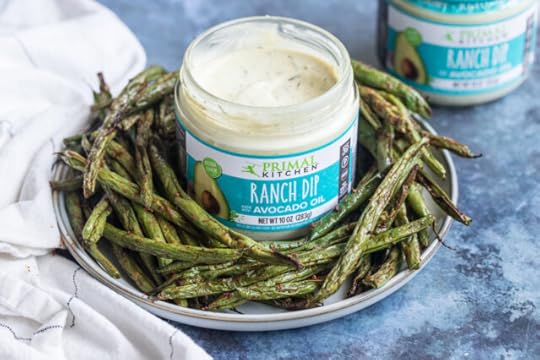 The air fryer is already your favorite appliance for making chicken wings and crispy Brussels sprouts, but you haven’t unlocked its full potential until you try this quick and easy air fryer green beans recipe. Flavorful, crispy green beans are the perfect addition to your next game day smorgasbord. Trying to get your kids to eat more veggies? Look no further than this fun finger food. Serve these air fryer green beans with Primal Kitchen Ranch Dip to tempt even the pickiest eater. (What kid doesn’t love dipping?)
The air fryer is already your favorite appliance for making chicken wings and crispy Brussels sprouts, but you haven’t unlocked its full potential until you try this quick and easy air fryer green beans recipe. Flavorful, crispy green beans are the perfect addition to your next game day smorgasbord. Trying to get your kids to eat more veggies? Look no further than this fun finger food. Serve these air fryer green beans with Primal Kitchen Ranch Dip to tempt even the pickiest eater. (What kid doesn’t love dipping?)
Although you can air fry frozen vegetables, this recipe works best with fresh, firm green beans. Try it and let us know how it turns out!
Air Fryer Green Beans RecipeServes: 3
Time in the Kitchen: 15 minutes
Ingredients:12 oz. trimmed green beans1 Tbsp avocado oil1 tsp onion powder1/2 tsp garlic powder1/2 tsp smoked paprika1/4 tsp salt1/4 tsp black pepperPrimal Kitchen Ranch Dip, for dipping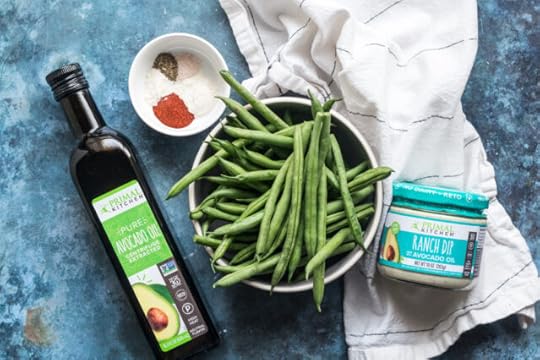 Directions:
Directions:Toss the green beans in the oil and spices. Arrange the green beans in an air fryer basket.
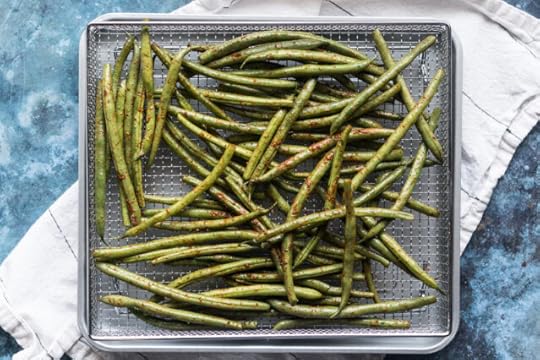
Heat the air fryer to 375 degrees Fahrenheit (190 degrees Celsius). Place the basket in the air fryer and set the timer to 8 minutes. At the end of the 8 minutes, check the green beans for doneness. You most likely will need to give them a shake and air fry for an additional 2 minutes. When finished, the green beans should be golden on the outside and tender.
Serve the green beans with the dip and enjoy!

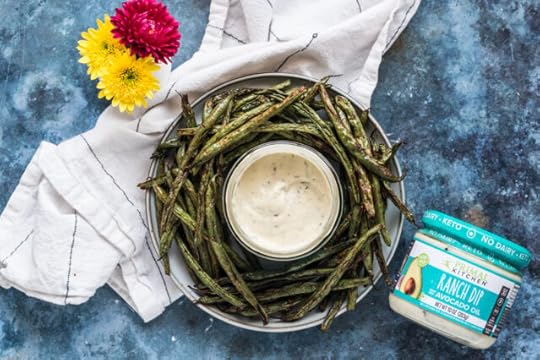
 Print.tasty-recipes-print-button{background-color:#667;border:none;display:inline-block;padding:.5em 1em;text-decoration:none}body:not(.tasty-recipes-print-view) .tasty-recipes-print-button.tasty-recipes-print-above-card{color:#fff;display:none}body:not(.tasty-recipes-print-view) .tasty-recipes-print-button.tasty-recipes-print-above-card:hover{background-color:#b2b2bb;color:#fff;display:inline-block;padding:.5em 1em;text-decoration:none}.tasty-recipes-image-button-container{display:flex;flex-direction:column;flex-wrap:wrap;float:right;margin-left:10px}body.tasty-recipes-print-view .tasty-recipes-buttons{display:none}.tasty-recipes-image-button-container .tasty-recipes-buttons{margin-bottom:10px;margin-top:10px}.tasty-recipes-image-button-container .tasty-recipes-button-wrap{box-sizing:border-box;margin-bottom:10px}.tasty-recipes-image-button-container .tasty-recipes-buttons a{background-color:#f9f9f9;border:1px solid #aaa;border-radius:0;color:#aaa;display:block;font-size:16px;font-weight:700;line-height:16px;margin-top:0;padding:8px;text-align:center;text-decoration:none;text-transform:uppercase}.tasty-recipes-image-button-container .tasty-recipes-buttons .button:hover{background-color:#aaa;border:1px solid #aaa;color:#fff;opacity:1}.tasty-recipes-image-button-container .tasty-recipes-buttons a:hover{background-color:#979599;text-decoration:none}.tasty-recipes-image-button-container .tasty-recipes-buttons svg{display:none}.tasty-recipes-yield-scale{border:1px solid #979599;border-radius:2px;color:#979599;font-size:.7rem;margin-left:3px;padding:0 4px}.tasty-recipes-units-scale-container{display:flex;flex-wrap:wrap}.tasty-recipes-convert-container{padding:0 1em 1em 0}.tasty-recipes-convert-container .tasty-recipes-convert-label{align-self:center;color:#979599;font-size:.6rem;text-transform:uppercase}.tasty-recipes-convert-container button{background:transparent;border:1px solid #979599;border-radius:2px;color:#979599;letter-spacing:0;margin-left:5px;min-width:34px;padding:2px 4px;text-align:center}.tasty-recipes-convert-container button.tasty-recipes-convert-button-active{border-color:#353547;color:#353547}.tasty-recipes-convert-container button:focus{outline:none}.tasty-recipes-scale-container{display:flex;padding:0 0 1em}.tasty-recipes-scale-container .tasty-recipes-scale-label{align-self:center;color:#979599;font-size:.6rem;text-transform:uppercase}.tasty-recipes-scale-container button{background:transparent;border:1px solid #979599;border-radius:2px;color:#979599;letter-spacing:0;margin-left:5px;min-width:34px;padding:2px 4px}.tasty-recipes-scale-container button.tasty-recipes-scale-button-active{border-color:#353547;color:#353547}.tasty-recipes-scale-container button:focus{outline:none}.tasty-recipes-ingredients-header{margin:1em 0}@media only screen and (min-width:520px){.tasty-recipes-ingredients-header{align-items:center;display:flex;flex-wrap:wrap;justify-content:space-between}}.tasty-recipes-ingredients-header .tasty-recipes-ingredients-clipboard-container{align-items:baseline;display:inline-flex}.tasty-recipes-ingredients-header h3{margin:0 10px 10px 0}.tasty-recipes-ingredients-clipboard-container .tasty-recipes-copy-button{background:transparent;border:none;color:#353547;height:24px;padding:0;position:relative;width:24px}.tasty-recipes-ingredients-clipboard-container .tasty-recipes-copy-button:hover{opacity:.5}.tasty-recipes-instructions-header{align-items:baseline;display:flex;flex-wrap:wrap;justify-content:space-between;margin:1em 0}.tasty-recipes-entry-content .tasty-recipes-instructions h3{margin:0 0 1rem}@media only screen and (min-width:520px){.tasty-recipes-entry-content .tasty-recipes-instructions h3{margin:0}}button[name=tasty-recipes-video-toggle]{background:#979599;border:#979599;border-radius:2px;display:inline-block;font-size:14px;height:30px;line-height:20px;margin:0;padding:0;text-align:center;vertical-align:middle;width:86px}button[name=tasty-recipes-video-toggle] span{padding:0 4px;pointer-events:none}button[name=tasty-recipes-video-toggle][aria-checked=false] :last-child,button[name=tasty-recipes-video-toggle][aria-checked=true] :first-child{background:#fff;border-radius:2px;color:#979599;padding:2px 4px}button[name=tasty-recipes-video-toggle][aria-checked=false] :first-child,button[name=tasty-recipes-video-toggle][aria-checked=true] :last-child{color:#fff}label[for=tasty-recipes-video-toggle]{color:#979599;font-size:.6rem;line-height:30px;padding-right:8px;text-transform:uppercase;user-select:none;-moz-user-select:none;-ms-user-select:none;-webkit-user-select:none;-o-user-select:none;vertical-align:middle}.tasty-recipe-responsive-iframe-container{margin:10px 0}.tasty-recipes-equipment{display:flex;flex-wrap:wrap;justify-content:space-evenly}.tasty-recipes-equipment>h3{flex:0 0 100%}.tasty-recipes-equipment .tasty-link-card{flex:0 0 50%;padding:1.5rem 1rem;text-align:center}@media screen and (min-width:500px){.tasty-recipes-equipment .tasty-link-card{flex:0 0 33%}}.tasty-recipes-equipment .tasty-link-card p{font-size:1em;font-weight:700;margin-bottom:0}.tasty-recipes-equipment .tasty-link-card p a{color:initial}.tasty-recipes-equipment .tasty-link-card span{font-size:.9em}.tasty-recipes .tasty-recipes-nutrition ul{list-style-type:none;margin:0;padding:0}.tasty-recipes .tasty-recipes-nutrition ul:after{clear:both;content:" ";display:block}.tasty-recipes .tasty-recipes-nutrition li{float:left;list-style-type:none;margin-bottom:0;margin-left:0;margin-right:16px}.tasty-recipes-plug{align-items:center;display:flex;flex-wrap:wrap;justify-content:center;margin-bottom:1em;text-align:center}.tasty-recipes-plug a{box-shadow:none;text-decoration:none}.tasty-recipes-plug a img{display:inline-block;height:auto;margin:5px 0 0 8px;width:150px}.tasty-recipes-footer-content{padding:1.5em;text-align:center}.tasty-recipes-footer-content .tasty-recipes-footer-copy{margin-left:0}.tasty-recipes-footer-content img,.tasty-recipes-footer-content svg{width:60px}.tasty-recipes-entry-content .tasty-recipes-entry-footer h3{font-size:1.25em;margin:0 0 .25em;padding:0}.tasty-recipes-entry-footer p{font-size:.75em;margin:0}.tasty-recipes-entry-footer p a{border-bottom:none;box-shadow:none;text-decoration:underline}.tasty-recipes-flash-message{background-color:#fff;border-radius:4px;box-shadow:0 .3px .4px 0 rgba(0,0,0,.024),0 .9px 1.5px 0 rgba(0,0,0,.05),0 3.5px 6px 0 rgba(0,0,0,.1);color:#313135;display:inline-block;font-size:13px;letter-spacing:0;line-height:1.2em;margin-left:10px;padding:4px 10px}@media screen and (min-width:500px){.tasty-recipes-flash-message{padding:4px 10px}}.tasty-recipes-flash-message p{margin:0;padding:0;text-transform:none}@media screen and (min-width:500px){.tasty-recipes-footer-content{align-items:center;display:flex;justify-content:center;padding:1.5em 0;text-align:left}.tasty-recipes-footer-content .tasty-recipes-footer-copy{margin-left:.8em}}@media print{.tasty-recipes-no-print,.tasty-recipes-no-print *{display:none!important}}[data-tr-ingredient-checkbox]{cursor:pointer;list-style-position:outside;list-style-type:none!important;margin-left:0!important}[data-tr-ingredient-checkbox] .tr-ingredient-checkbox-container{position:relative}[data-tr-ingredient-checkbox] .tr-ingredient-checkbox-container input[type=checkbox]+label{display:inline-block;position:relative;vertical-align:middle}[data-tr-ingredient-checkbox] .tr-ingredient-checkbox-container input[type=checkbox]{clip:rect(1px 1px 1px 1px);clip:rect(1px,1px,1px,1px);height:1px;overflow:hidden;position:absolute!important;width:1px}[data-tr-ingredient-checkbox] .tr-ingredient-checkbox-container input[type=checkbox]+label:before{border:1px solid;border-radius:2px;content:"";display:inline-block;height:20px;margin-right:10px;position:relative;width:20px}[data-tr-ingredient-checkbox] .tr-ingredient-checkbox-container input[type=checkbox]:checked+label:after{border-bottom:2px solid;border-left:2px solid;content:"";display:inline-block;height:6px;left:4px;position:absolute;top:4px;transform:rotate(-45deg);width:12px}[data-tr-ingredient-checkbox] .tr-ingredient-checkbox-container input[type=checkbox]:focus+label:before{box-shadow:0 0 8px #5e9ed6;outline:1px solid #5d9dd5}[data-tr-ingredient-checkbox=checked]{opacity:.8;text-decoration:line-through}/* Bold recipe card styles. */ .tasty-recipes{border:5px solid #667;margin-top:6em;margin-bottom:4em}.tasty-recipes.tasty-recipes-has-plug{margin-bottom:1em}.tasty-recipes-plug{margin-bottom:4em}.tasty-recipes-print-button{display:none}.tasty-recipes-image-shim{height:69.5px;clear:both}.tasty-recipes-entry-header{background-color:#667;color:#fff;text-align:center;padding-top:35px;padding-bottom:1.5em;padding-left:2.5em;padding-right:2.5em}.tasty-recipes-entry-header.tasty-recipes-has-image{padding-top:0px}.tasty-recipes-entry-header .tasty-recipes-image{float:none;text-align:center;transform:translateY(-115px);margin-bottom:1em;/* Decide if we need this */}.tasty-recipes-entry-header .tasty-recipes-image img{-webkit-border-radius:50%;-moz-border-radius:50%;border-radius:50%;border:5px solid #667;height:150px;width:150px;display:inline-block;object-fit:cover}.tasty-recipes-entry-header h2{font-size:2em;font-weight:400;text-transform:lowercase;margin-bottom:0;text-align:center;color:#fff;margin-top:0;padding-top:0;padding-bottom:0}.tasty-recipes-has-image .tasty-recipes-entry-header h2{margin-top:-115px}.tasty-recipes-entry-header hr{border:1px solid #b7bbc6;background-color:#b7bbc6;margin-bottom:1em;margin-top:1em}.tasty-recipes-entry-header div.tasty-recipes-rating{text-decoration:none;border:none}.tasty-recipes-entry-header .tasty-recipes-rating:hover{text-decoration:none}.tasty-recipes-entry-header div.tasty-recipes-rating{font-size:1.375em;display:block}.tasty-recipes-entry-header .tasty-recipes-rating p{margin-bottom:0}.tasty-recipes-entry-header span.tasty-recipes-rating{margin-left:0.25em;margin-right:0.25em;color:#fff}.tasty-recipes-entry-header .rating-label{font-style:italic;color:#b7bbc6;font-size:0.6875em;display:block}.tasty-recipes-entry-header .tasty-recipes-details{margin-top:1em}.tasty-recipes-entry-header .tasty-recipes-details ul{list-style-type:none;margin:0}.tasty-recipes-entry-header .tasty-recipes-details ul li{display:inline-block;margin-left:0.5em;margin-right:0.5em;font-size:1em;line-height:2.5em;color:#fff}@media only screen and (max-width:520px){.tasty-recipes-entry-header .tasty-recipes-details .detail-icon{height:0.8em;margin-top:0.4em}.tasty-recipes-entry-header .tasty-recipes-details ul li{font-size:0.875em;line-height:1.75em}}@media only screen and (min-width:520px){.tasty-recipes-entry-header .tasty-recipes-details .detail-icon{height:1em;margin-top:0.6em}.tasty-recipes-entry-header .tasty-recipes-details ul li{font-size:1em;line-height:2.5em}}.tasty-recipes-entry-header .tasty-recipes-details .tasty-recipes-label{font-style:italic;color:#b7bbc6;margin-right:0.125em}.tasty-recipes-entry-header .tasty-recipes-details .detail-icon{vertical-align:top;margin-right:0.2em;display:inline-block;color:#FFF}.tasty-recipes-entry-header .tasty-recipes-details .author a{color:inherit;text-decoration:underline}.tasty-recipes-entry-content{padding-top:1.25em}.tasty-recipes-entry-content .tasty-recipes-buttons{margin-bottom:1.25em;margin-left:1.25em;margin-right:1.25em}.tasty-recipes-entry-content .tasty-recipes-buttons:after{content:' ';display:block;clear:both}.tasty-recipes-entry-content .tasty-recipes-button-wrap{width:50%;display:inline-block;float:left;box-sizing:border-box}.tasty-recipes-entry-content .tasty-recipes-buttons a{text-transform:uppercase;text-align:center;display:block;color:#fff;background-color:#667;font-size:1em;line-height:1.375em;padding-top:1em;padding-bottom:1em;font-weight:bold;margin-top:0;border:none;border-radius:0;text-decoration:none}.tasty-recipes-entry-content a img{box-shadow:none;-webkit-box-shadow:none}.tasty-recipes-entry-content .tasty-recipes-buttons a:hover{background-color:#979599;text-decoration:none}.tasty-recipes-entry-content .tasty-recipes-buttons img{vertical-align:top}.tasty-recipes-entry-content .tasty-recipes-buttons .svg-print,.tasty-recipes-entry-content .tasty-recipes-buttons .svg-pinterest,.tasty-recipes-entry-content .tasty-recipes-buttons .svg-heart-regular,.tasty-recipes-entry-content .tasty-recipes-buttons .svg-heart-solid{height:1.25em;margin-right:0.375em;margin-bottom:0;background:none;display:inline-block;vertical-align:middle}@media only screen and (min-width:520px){.tasty-recipes-entry-content .tasty-recipes-button-wrap:first-child{padding-right:0.625em}.tasty-recipes-entry-content .tasty-recipes-button-wrap:last-child{padding-left:0.625em}}@media only screen and (max-width:520px){.tasty-recipes-entry-content .tasty-recipes-button-wrap{width:100%}.tasty-recipes-entry-content .tasty-recipes-button-wrap:nth-child(2){padding-top:1em}}.tasty-recipes-entry-content h3{text-transform:uppercase;font-size:0.75em;color:#979599;margin:1.5em 0}.tasty-recipes-ingredients-header,.tasty-recipes-instructions-header{margin:1.5em 0}.tasty-recipes-entry-content h4{font-size:1em;padding-top:0;margin-bottom:1.5em;margin-top:1.5em}.tasty-recipes-entry-content hr{background-color:#eae9eb;border:1px solid #eae9eb;margin-top:1em;margin-bottom:1em}.tasty-recipes-entry-content .tasty-recipes-description,.tasty-recipes-entry-content .tasty-recipes-ingredients,.tasty-recipes-entry-content .tasty-recipes-instructions,.tasty-recipes-entry-content .tasty-recipes-keywords{padding-left:1.25em;padding-right:1.25em}.tasty-recipes-entry-content .tasty-recipes-description h3{display:none}.tasty-recipes-entry-content .tasty-recipes-description p{margin-bottom:1em}.tasty-recipes-entry-content .tasty-recipes-ingredients ul,.tasty-recipes-entry-content .tasty-recipes-instructions ul{list-style-type:none;margin-left:0;margin-bottom:1.5em;padding:0}.tasty-recipes-entry-content .tasty-recipes-ingredients ul li,.tasty-recipes-entry-content .tasty-recipes-instructions ul li{margin-bottom:0.625em;list-style-type:none;position:relative;margin-left:1.5em;line-height:1.46}.tasty-recipes-entry-content .tasty-recipes-ingredients ul li:before,.tasty-recipes-entry-content .tasty-recipes-instructions ul li:before{background-color:#667;-webkit-border-radius:50%;-moz-border-radius:50%;border-radius:50%;height:0.5em;width:0.5em;display:block;content:' ';left:-1.25em;top:0.375em;position:absolute}.tasty-recipes-entry-content .tasty-recipes-ingredients ol,.tasty-recipes-entry-content .tasty-recipes-instructions ol{counter-reset:li;margin-left:0;padding:0}.tasty-recipes-entry-content .tasty-recipes-ingredients ol>li,.tasty-recipes-entry-content .tasty-recipes-instructions ol>li{list-style-type:none;position:relative;margin-bottom:1em;margin-left:1.5em;line-height:1.46}.tasty-recipes-entry-content .tasty-recipes-ingredients ol>li:before,.tasty-recipes-entry-content .tasty-recipes-instructions ol>li:before{content:counter(li);counter-increment:li;position:absolute;background-color:#667;-webkit-border-radius:50%;-moz-border-radius:50%;border-radius:50%;height:1.45em;width:1.45em;color:#fff;left:-1.25em;transform:translateX(-50%);line-height:1.5em;font-size:0.6875em;text-align:center;top:0.1875em}.tasty-recipes-entry-content .tasty-recipes-ingredients li li,.tasty-recipes-entry-content .tasty-recipes-instructions li li{margin-top:0.625em}.tasty-recipes-entry-content .tasty-recipes-ingredients li ul,.tasty-recipes-entry-content .tasty-recipes-ingredients li ol,.tasty-recipes-entry-content .tasty-recipes-instructions li ul,.tasty-recipes-entry-content .tasty-recipes-instructions li ol{margin-bottom:0}.tasty-recipes-entry-content .tasty-recipes-equipment{padding-left:1.25em;padding-right:1.25em}.tasty-recipes-entry-content .tasty-recipe-video-embed~.tasty-recipes-equipment{padding-top:1em}.tasty-recipes-entry-content .tasty-recipes-notes{padding:1.25em;background-color:#edf0f2}.tasty-recipes-entry-content .tasty-recipes-notes ol{counter-reset:li;margin-left:0;padding:0}.tasty-recipes-entry-content .tasty-recipes-notes ul{margin-left:0;padding:0}.tasty-recipes-entry-content .tasty-recipes-notes p,.tasty-recipes-entry-content .tasty-recipes-notes ul,.tasty-recipes-entry-content .tasty-recipes-notes ol{background-color:#fff;padding-left:1.5625em;padding-right:1.5625em;padding-top:1.25em;padding-bottom:1.25em;margin-bottom:1.5em;position:relative;-webkit-clip-path:polygon(20px 0,100% 0,100% 100%,0 100%,0 20px);clip-path:polygon(20px 0,100% 0,100% 100%,0 100%,0 20px)}@media only screen and (min-width:520px){.tasty-recipes-entry-content .tasty-recipes-notes ul,.tasty-recipes-entry-content .tasty-recipes-notes ol{margin-left:2em}.tasty-recipes-entry-content .tasty-recipes-notes p,.tasty-recipes-entry-content .tasty-recipes-notes ul li,.tasty-recipes-entry-content .tasty-recipes-notes ol li{padding-left:2.5em}.tasty-recipes-entry-content .tasty-recipes-notes ul li,.tasty-recipes-entry-content .tasty-recipes-notes ol li{position:relative;list-style:none;padding-top:1em;margin-left:0;margin-bottom:0}.tasty-recipes-entry-content .tasty-recipes-notes p:before,.tasty-recipes-entry-content .tasty-recipes-notes ul li:before{content:'i';display:block;background-color:#667;-webkit-border-radius:50%;-moz-border-radius:50%;border-radius:50%;height:1.3em;width:1.3em;font-size:0.75em;line-height:1.3em;text-align:center;color:#fff;position:absolute;left:1.167em;top:1.9em}.tasty-recipes-entry-content .tasty-recipes-notes ol>li:before{content:counter(li);counter-increment:li;position:absolute;background-color:#667;-webkit-border-radius:50%;-moz-border-radius:50%;border-radius:50%;height:1.45em;width:1.45em;color:#fff;left:2em;transform:translateX(-50%);line-height:1.5em;font-size:0.6875em;text-align:center;top:2em}}.tasty-recipes-entry-content .tasty-recipes-notes p:last-child{margin-bottom:0}.tasty-recipes-entry-content .tasty-recipes-other-details{background-color:#edf0f2;padding:0 1.25em 1.25em}.tasty-recipes-entry-content .tasty-recipes-other-details ul{color:#667;display:flex;flex-wrap:wrap;font-size:0.85rem;list-style:none;margin-bottom:0}.tasty-recipes-entry-content .tasty-recipes-other-details ul li{margin:0 0.5rem;list-style:none}.tasty-recipes-entry-content .tasty-recipes-other-details ul li .tasty-recipes-label{font-style:italic}.tasty-recipes-entry-content .tasty-recipes-other-details .detail-icon{color:#667;vertical-align:top;margin-right:0.2em;display:inline-block}@media only screen and (max-width:520px){.tasty-recipes-entry-content .tasty-recipes-other-details .detail-icon{height:0.8em;margin-top:0.4em}.tasty-recipes-entry-content .tasty-recipes-other-details ul li{font-size:0.875em;line-height:1.75em}}@media only screen and (min-width:520px){.tasty-recipes-entry-content .tasty-recipes-other-details .detail-icon{height:1em;margin-top:0.8em}.tasty-recipes-entry-content .tasty-recipes-other-details ul li{font-size:1em;line-height:2.5em}}.tasty-recipes-entry-content .tasty-recipes-keywords{background-color:#edf0f2;padding-bottom:1em;padding-top:1em}.tasty-recipes-entry-content .tasty-recipes-keywords p{font-size:0.7em;font-style:italic;color:#979599;margin-bottom:0}.tasty-recipes-entry-content .tasty-recipes-keywords p span{font-weight:bold}.tasty-recipes-nutrifox{text-align:center;margin:0}.nutrifox-label{background-color:#edf0f2}.tasty-recipes-nutrifox iframe{width:100%;display:block;margin:0}.tasty-recipes-entry-content .tasty-recipes-nutrition{padding:1.25em;color:#667}.tasty-recipes-nutrition .tasty-recipes-label{font-style:italic;color:#b7bbc6;margin-right:0.125em;font-weight:400}.tasty-recipes-nutrition ul li{float:none;display:inline-block;line-height:2em;margin:0 10px 0 0}.tasty-recipes-entry-footer{background-color:#667}.tasty-recipes-entry-footer img,.tasty-recipes-entry-footer svg{color:#FFF}.tasty-recipes-entry-content .tasty-recipes-entry-footer h3{color:#fff}.tasty-recipes-entry-footer{color:#fff}.tasty-recipes-entry-footer:after{content:' ';display:block;clear:both}/* Print view styles */ .tasty-recipes-print-view .tasty-recipe-video-embed,.tasty-recipes-print-view .tasty-recipes-other-details,.tasty-recipes-print .tasty-recipes-entry-header .tasty-recipes-details .detail-icon,.tasty-recipes-print .tasty-recipes-entry-content .tasty-recipes-notes p:before,.tasty-recipes-print .tasty-recipes-entry-content .tasty-recipes-notes ul li:before,.tasty-recipes-print .tasty-recipes-entry-content .tasty-recipes-ingredients ul li:before,.tasty-recipes-print .tasty-recipes-entry-content .tasty-recipes-ingredients ol li:before,.tasty-recipes-print .tasty-recipes-entry-content .tasty-recipes-instructions ul li:before,.tasty-recipes-print .tasty-recipes-entry-content .tasty-recipes-instructions ol li:before,.tasty-recipes-print .tasty-recipes-entry-content .tasty-recipes-notes ol>li:before,.tasty-recipes-print .tasty-recipes-entry-footer img{display:none}.tasty-recipes-print-view{font-size:11px;background-color:#fff;line-height:1.5em}.tasty-recipes-print{padding:0}.tasty-recipes-print-view .tasty-recipes{margin-top:1em}.tasty-recipes-print-view .tasty-recipes-entry-content h3{font-size:1.2em;letter-spacing:0.1em;margin:0 0 10px 0}.tasty-recipes-print-view .tasty-recipes-ingredients-header,.tasty-recipes-print-view .tasty-recipes-instructions-header{margin:0}.tasty-recipes-print-view .tasty-recipes-ingredients,.tasty-recipes-print-view .tasty-recipes-instructions{padding:1.25em}.tasty-recipes-print .tasty-recipes-entry-header{background-color:inherit;color:inherit;padding-bottom:0;padding-left:1em;padding-right:1em;padding-top:1em;text-align:left}.tasty-recipes-print .tasty-recipes-entry-header .tasty-recipes-image{float:right;transform:none}.tasty-recipes-print.tasty-recipes-has-image .tasty-recipes-entry-header h2{margin-top:0;text-align:left}.tasty-recipes-print .tasty-recipes-entry-header h2{color:inherit;margin-bottom:0.5em}.tasty-recipes-print .tasty-recipes-entry-header hr{display:none}.tasty-recipes-print .tasty-recipes-entry-header span.tasty-recipes-rating{color:#000}.tasty-recipes-entry-header div.tasty-recipes-rating a{text-decoration:none}.tasty-recipes-entry-header div.tasty-recipes-rating p{margin-top:4px}.tasty-recipes-print .tasty-recipes-entry-header .tasty-recipes-details ul{padding:0;clear:none}.tasty-recipes-print .tasty-recipes-entry-header .tasty-recipes-details ul li{line-height:1.5em;color:#000;margin:0 10px 0 0}.tasty-recipes-print .tasty-recipes-entry-content img{max-width:50%;height:auto}.tasty-recipes-print .tasty-recipes-entry-content .tasty-recipes-ingredients ol li,.tasty-recipes-print .tasty-recipes-entry-content .tasty-recipes-instructions ol li{margin-bottom:0.5em;line-height:1.1;list-style:decimal;line-height:1.5em}.tasty-recipes-print .tasty-recipes-entry-content .tasty-recipes-ingredients ul li,.tasty-recipes-print .tasty-recipes-entry-content .tasty-recipes-instructions ul li{margin-bottom:0.5em;line-height:1.1;list-style:disc}.tasty-recipes-print .tasty-recipes-entry-content .tasty-recipes-notes{background:none!important}.tasty-recipes-print .tasty-recipes-entry-content .tasty-recipes-notes ul,.tasty-recipes-print .tasty-recipes-entry-content .tasty-recipes-notes ol{background:none!important}.tasty-recipes-print .tasty-recipes-entry-content .tasty-recipes-notes ol li{padding:0;clip-path:none;background:none;line-height:1.5em;list-style:decimal}.tasty-recipes-print .tasty-recipes-entry-content .tasty-recipes-notes p{padding:0;clip-path:none;background:none;line-height:1.5em}.tasty-recipes-print .tasty-recipes-entry-content .tasty-recipes-notes ul li{padding:0;clip-path:none;background:none;line-height:1.5em;list-style:disc}.tasty-recipes-print .tasty-recipes-source-link{text-align:center}.tasty-recipes-entry-content .tasty-recipes-ingredients ul li[data-tr-ingredient-checkbox]:before{display:none}
Print.tasty-recipes-print-button{background-color:#667;border:none;display:inline-block;padding:.5em 1em;text-decoration:none}body:not(.tasty-recipes-print-view) .tasty-recipes-print-button.tasty-recipes-print-above-card{color:#fff;display:none}body:not(.tasty-recipes-print-view) .tasty-recipes-print-button.tasty-recipes-print-above-card:hover{background-color:#b2b2bb;color:#fff;display:inline-block;padding:.5em 1em;text-decoration:none}.tasty-recipes-image-button-container{display:flex;flex-direction:column;flex-wrap:wrap;float:right;margin-left:10px}body.tasty-recipes-print-view .tasty-recipes-buttons{display:none}.tasty-recipes-image-button-container .tasty-recipes-buttons{margin-bottom:10px;margin-top:10px}.tasty-recipes-image-button-container .tasty-recipes-button-wrap{box-sizing:border-box;margin-bottom:10px}.tasty-recipes-image-button-container .tasty-recipes-buttons a{background-color:#f9f9f9;border:1px solid #aaa;border-radius:0;color:#aaa;display:block;font-size:16px;font-weight:700;line-height:16px;margin-top:0;padding:8px;text-align:center;text-decoration:none;text-transform:uppercase}.tasty-recipes-image-button-container .tasty-recipes-buttons .button:hover{background-color:#aaa;border:1px solid #aaa;color:#fff;opacity:1}.tasty-recipes-image-button-container .tasty-recipes-buttons a:hover{background-color:#979599;text-decoration:none}.tasty-recipes-image-button-container .tasty-recipes-buttons svg{display:none}.tasty-recipes-yield-scale{border:1px solid #979599;border-radius:2px;color:#979599;font-size:.7rem;margin-left:3px;padding:0 4px}.tasty-recipes-units-scale-container{display:flex;flex-wrap:wrap}.tasty-recipes-convert-container{padding:0 1em 1em 0}.tasty-recipes-convert-container .tasty-recipes-convert-label{align-self:center;color:#979599;font-size:.6rem;text-transform:uppercase}.tasty-recipes-convert-container button{background:transparent;border:1px solid #979599;border-radius:2px;color:#979599;letter-spacing:0;margin-left:5px;min-width:34px;padding:2px 4px;text-align:center}.tasty-recipes-convert-container button.tasty-recipes-convert-button-active{border-color:#353547;color:#353547}.tasty-recipes-convert-container button:focus{outline:none}.tasty-recipes-scale-container{display:flex;padding:0 0 1em}.tasty-recipes-scale-container .tasty-recipes-scale-label{align-self:center;color:#979599;font-size:.6rem;text-transform:uppercase}.tasty-recipes-scale-container button{background:transparent;border:1px solid #979599;border-radius:2px;color:#979599;letter-spacing:0;margin-left:5px;min-width:34px;padding:2px 4px}.tasty-recipes-scale-container button.tasty-recipes-scale-button-active{border-color:#353547;color:#353547}.tasty-recipes-scale-container button:focus{outline:none}.tasty-recipes-ingredients-header{margin:1em 0}@media only screen and (min-width:520px){.tasty-recipes-ingredients-header{align-items:center;display:flex;flex-wrap:wrap;justify-content:space-between}}.tasty-recipes-ingredients-header .tasty-recipes-ingredients-clipboard-container{align-items:baseline;display:inline-flex}.tasty-recipes-ingredients-header h3{margin:0 10px 10px 0}.tasty-recipes-ingredients-clipboard-container .tasty-recipes-copy-button{background:transparent;border:none;color:#353547;height:24px;padding:0;position:relative;width:24px}.tasty-recipes-ingredients-clipboard-container .tasty-recipes-copy-button:hover{opacity:.5}.tasty-recipes-instructions-header{align-items:baseline;display:flex;flex-wrap:wrap;justify-content:space-between;margin:1em 0}.tasty-recipes-entry-content .tasty-recipes-instructions h3{margin:0 0 1rem}@media only screen and (min-width:520px){.tasty-recipes-entry-content .tasty-recipes-instructions h3{margin:0}}button[name=tasty-recipes-video-toggle]{background:#979599;border:#979599;border-radius:2px;display:inline-block;font-size:14px;height:30px;line-height:20px;margin:0;padding:0;text-align:center;vertical-align:middle;width:86px}button[name=tasty-recipes-video-toggle] span{padding:0 4px;pointer-events:none}button[name=tasty-recipes-video-toggle][aria-checked=false] :last-child,button[name=tasty-recipes-video-toggle][aria-checked=true] :first-child{background:#fff;border-radius:2px;color:#979599;padding:2px 4px}button[name=tasty-recipes-video-toggle][aria-checked=false] :first-child,button[name=tasty-recipes-video-toggle][aria-checked=true] :last-child{color:#fff}label[for=tasty-recipes-video-toggle]{color:#979599;font-size:.6rem;line-height:30px;padding-right:8px;text-transform:uppercase;user-select:none;-moz-user-select:none;-ms-user-select:none;-webkit-user-select:none;-o-user-select:none;vertical-align:middle}.tasty-recipe-responsive-iframe-container{margin:10px 0}.tasty-recipes-equipment{display:flex;flex-wrap:wrap;justify-content:space-evenly}.tasty-recipes-equipment>h3{flex:0 0 100%}.tasty-recipes-equipment .tasty-link-card{flex:0 0 50%;padding:1.5rem 1rem;text-align:center}@media screen and (min-width:500px){.tasty-recipes-equipment .tasty-link-card{flex:0 0 33%}}.tasty-recipes-equipment .tasty-link-card p{font-size:1em;font-weight:700;margin-bottom:0}.tasty-recipes-equipment .tasty-link-card p a{color:initial}.tasty-recipes-equipment .tasty-link-card span{font-size:.9em}.tasty-recipes .tasty-recipes-nutrition ul{list-style-type:none;margin:0;padding:0}.tasty-recipes .tasty-recipes-nutrition ul:after{clear:both;content:" ";display:block}.tasty-recipes .tasty-recipes-nutrition li{float:left;list-style-type:none;margin-bottom:0;margin-left:0;margin-right:16px}.tasty-recipes-plug{align-items:center;display:flex;flex-wrap:wrap;justify-content:center;margin-bottom:1em;text-align:center}.tasty-recipes-plug a{box-shadow:none;text-decoration:none}.tasty-recipes-plug a img{display:inline-block;height:auto;margin:5px 0 0 8px;width:150px}.tasty-recipes-footer-content{padding:1.5em;text-align:center}.tasty-recipes-footer-content .tasty-recipes-footer-copy{margin-left:0}.tasty-recipes-footer-content img,.tasty-recipes-footer-content svg{width:60px}.tasty-recipes-entry-content .tasty-recipes-entry-footer h3{font-size:1.25em;margin:0 0 .25em;padding:0}.tasty-recipes-entry-footer p{font-size:.75em;margin:0}.tasty-recipes-entry-footer p a{border-bottom:none;box-shadow:none;text-decoration:underline}.tasty-recipes-flash-message{background-color:#fff;border-radius:4px;box-shadow:0 .3px .4px 0 rgba(0,0,0,.024),0 .9px 1.5px 0 rgba(0,0,0,.05),0 3.5px 6px 0 rgba(0,0,0,.1);color:#313135;display:inline-block;font-size:13px;letter-spacing:0;line-height:1.2em;margin-left:10px;padding:4px 10px}@media screen and (min-width:500px){.tasty-recipes-flash-message{padding:4px 10px}}.tasty-recipes-flash-message p{margin:0;padding:0;text-transform:none}@media screen and (min-width:500px){.tasty-recipes-footer-content{align-items:center;display:flex;justify-content:center;padding:1.5em 0;text-align:left}.tasty-recipes-footer-content .tasty-recipes-footer-copy{margin-left:.8em}}@media print{.tasty-recipes-no-print,.tasty-recipes-no-print *{display:none!important}}[data-tr-ingredient-checkbox]{cursor:pointer;list-style-position:outside;list-style-type:none!important;margin-left:0!important}[data-tr-ingredient-checkbox] .tr-ingredient-checkbox-container{position:relative}[data-tr-ingredient-checkbox] .tr-ingredient-checkbox-container input[type=checkbox]+label{display:inline-block;position:relative;vertical-align:middle}[data-tr-ingredient-checkbox] .tr-ingredient-checkbox-container input[type=checkbox]{clip:rect(1px 1px 1px 1px);clip:rect(1px,1px,1px,1px);height:1px;overflow:hidden;position:absolute!important;width:1px}[data-tr-ingredient-checkbox] .tr-ingredient-checkbox-container input[type=checkbox]+label:before{border:1px solid;border-radius:2px;content:"";display:inline-block;height:20px;margin-right:10px;position:relative;width:20px}[data-tr-ingredient-checkbox] .tr-ingredient-checkbox-container input[type=checkbox]:checked+label:after{border-bottom:2px solid;border-left:2px solid;content:"";display:inline-block;height:6px;left:4px;position:absolute;top:4px;transform:rotate(-45deg);width:12px}[data-tr-ingredient-checkbox] .tr-ingredient-checkbox-container input[type=checkbox]:focus+label:before{box-shadow:0 0 8px #5e9ed6;outline:1px solid #5d9dd5}[data-tr-ingredient-checkbox=checked]{opacity:.8;text-decoration:line-through}/* Bold recipe card styles. */ .tasty-recipes{border:5px solid #667;margin-top:6em;margin-bottom:4em}.tasty-recipes.tasty-recipes-has-plug{margin-bottom:1em}.tasty-recipes-plug{margin-bottom:4em}.tasty-recipes-print-button{display:none}.tasty-recipes-image-shim{height:69.5px;clear:both}.tasty-recipes-entry-header{background-color:#667;color:#fff;text-align:center;padding-top:35px;padding-bottom:1.5em;padding-left:2.5em;padding-right:2.5em}.tasty-recipes-entry-header.tasty-recipes-has-image{padding-top:0px}.tasty-recipes-entry-header .tasty-recipes-image{float:none;text-align:center;transform:translateY(-115px);margin-bottom:1em;/* Decide if we need this */}.tasty-recipes-entry-header .tasty-recipes-image img{-webkit-border-radius:50%;-moz-border-radius:50%;border-radius:50%;border:5px solid #667;height:150px;width:150px;display:inline-block;object-fit:cover}.tasty-recipes-entry-header h2{font-size:2em;font-weight:400;text-transform:lowercase;margin-bottom:0;text-align:center;color:#fff;margin-top:0;padding-top:0;padding-bottom:0}.tasty-recipes-has-image .tasty-recipes-entry-header h2{margin-top:-115px}.tasty-recipes-entry-header hr{border:1px solid #b7bbc6;background-color:#b7bbc6;margin-bottom:1em;margin-top:1em}.tasty-recipes-entry-header div.tasty-recipes-rating{text-decoration:none;border:none}.tasty-recipes-entry-header .tasty-recipes-rating:hover{text-decoration:none}.tasty-recipes-entry-header div.tasty-recipes-rating{font-size:1.375em;display:block}.tasty-recipes-entry-header .tasty-recipes-rating p{margin-bottom:0}.tasty-recipes-entry-header span.tasty-recipes-rating{margin-left:0.25em;margin-right:0.25em;color:#fff}.tasty-recipes-entry-header .rating-label{font-style:italic;color:#b7bbc6;font-size:0.6875em;display:block}.tasty-recipes-entry-header .tasty-recipes-details{margin-top:1em}.tasty-recipes-entry-header .tasty-recipes-details ul{list-style-type:none;margin:0}.tasty-recipes-entry-header .tasty-recipes-details ul li{display:inline-block;margin-left:0.5em;margin-right:0.5em;font-size:1em;line-height:2.5em;color:#fff}@media only screen and (max-width:520px){.tasty-recipes-entry-header .tasty-recipes-details .detail-icon{height:0.8em;margin-top:0.4em}.tasty-recipes-entry-header .tasty-recipes-details ul li{font-size:0.875em;line-height:1.75em}}@media only screen and (min-width:520px){.tasty-recipes-entry-header .tasty-recipes-details .detail-icon{height:1em;margin-top:0.6em}.tasty-recipes-entry-header .tasty-recipes-details ul li{font-size:1em;line-height:2.5em}}.tasty-recipes-entry-header .tasty-recipes-details .tasty-recipes-label{font-style:italic;color:#b7bbc6;margin-right:0.125em}.tasty-recipes-entry-header .tasty-recipes-details .detail-icon{vertical-align:top;margin-right:0.2em;display:inline-block;color:#FFF}.tasty-recipes-entry-header .tasty-recipes-details .author a{color:inherit;text-decoration:underline}.tasty-recipes-entry-content{padding-top:1.25em}.tasty-recipes-entry-content .tasty-recipes-buttons{margin-bottom:1.25em;margin-left:1.25em;margin-right:1.25em}.tasty-recipes-entry-content .tasty-recipes-buttons:after{content:' ';display:block;clear:both}.tasty-recipes-entry-content .tasty-recipes-button-wrap{width:50%;display:inline-block;float:left;box-sizing:border-box}.tasty-recipes-entry-content .tasty-recipes-buttons a{text-transform:uppercase;text-align:center;display:block;color:#fff;background-color:#667;font-size:1em;line-height:1.375em;padding-top:1em;padding-bottom:1em;font-weight:bold;margin-top:0;border:none;border-radius:0;text-decoration:none}.tasty-recipes-entry-content a img{box-shadow:none;-webkit-box-shadow:none}.tasty-recipes-entry-content .tasty-recipes-buttons a:hover{background-color:#979599;text-decoration:none}.tasty-recipes-entry-content .tasty-recipes-buttons img{vertical-align:top}.tasty-recipes-entry-content .tasty-recipes-buttons .svg-print,.tasty-recipes-entry-content .tasty-recipes-buttons .svg-pinterest,.tasty-recipes-entry-content .tasty-recipes-buttons .svg-heart-regular,.tasty-recipes-entry-content .tasty-recipes-buttons .svg-heart-solid{height:1.25em;margin-right:0.375em;margin-bottom:0;background:none;display:inline-block;vertical-align:middle}@media only screen and (min-width:520px){.tasty-recipes-entry-content .tasty-recipes-button-wrap:first-child{padding-right:0.625em}.tasty-recipes-entry-content .tasty-recipes-button-wrap:last-child{padding-left:0.625em}}@media only screen and (max-width:520px){.tasty-recipes-entry-content .tasty-recipes-button-wrap{width:100%}.tasty-recipes-entry-content .tasty-recipes-button-wrap:nth-child(2){padding-top:1em}}.tasty-recipes-entry-content h3{text-transform:uppercase;font-size:0.75em;color:#979599;margin:1.5em 0}.tasty-recipes-ingredients-header,.tasty-recipes-instructions-header{margin:1.5em 0}.tasty-recipes-entry-content h4{font-size:1em;padding-top:0;margin-bottom:1.5em;margin-top:1.5em}.tasty-recipes-entry-content hr{background-color:#eae9eb;border:1px solid #eae9eb;margin-top:1em;margin-bottom:1em}.tasty-recipes-entry-content .tasty-recipes-description,.tasty-recipes-entry-content .tasty-recipes-ingredients,.tasty-recipes-entry-content .tasty-recipes-instructions,.tasty-recipes-entry-content .tasty-recipes-keywords{padding-left:1.25em;padding-right:1.25em}.tasty-recipes-entry-content .tasty-recipes-description h3{display:none}.tasty-recipes-entry-content .tasty-recipes-description p{margin-bottom:1em}.tasty-recipes-entry-content .tasty-recipes-ingredients ul,.tasty-recipes-entry-content .tasty-recipes-instructions ul{list-style-type:none;margin-left:0;margin-bottom:1.5em;padding:0}.tasty-recipes-entry-content .tasty-recipes-ingredients ul li,.tasty-recipes-entry-content .tasty-recipes-instructions ul li{margin-bottom:0.625em;list-style-type:none;position:relative;margin-left:1.5em;line-height:1.46}.tasty-recipes-entry-content .tasty-recipes-ingredients ul li:before,.tasty-recipes-entry-content .tasty-recipes-instructions ul li:before{background-color:#667;-webkit-border-radius:50%;-moz-border-radius:50%;border-radius:50%;height:0.5em;width:0.5em;display:block;content:' ';left:-1.25em;top:0.375em;position:absolute}.tasty-recipes-entry-content .tasty-recipes-ingredients ol,.tasty-recipes-entry-content .tasty-recipes-instructions ol{counter-reset:li;margin-left:0;padding:0}.tasty-recipes-entry-content .tasty-recipes-ingredients ol>li,.tasty-recipes-entry-content .tasty-recipes-instructions ol>li{list-style-type:none;position:relative;margin-bottom:1em;margin-left:1.5em;line-height:1.46}.tasty-recipes-entry-content .tasty-recipes-ingredients ol>li:before,.tasty-recipes-entry-content .tasty-recipes-instructions ol>li:before{content:counter(li);counter-increment:li;position:absolute;background-color:#667;-webkit-border-radius:50%;-moz-border-radius:50%;border-radius:50%;height:1.45em;width:1.45em;color:#fff;left:-1.25em;transform:translateX(-50%);line-height:1.5em;font-size:0.6875em;text-align:center;top:0.1875em}.tasty-recipes-entry-content .tasty-recipes-ingredients li li,.tasty-recipes-entry-content .tasty-recipes-instructions li li{margin-top:0.625em}.tasty-recipes-entry-content .tasty-recipes-ingredients li ul,.tasty-recipes-entry-content .tasty-recipes-ingredients li ol,.tasty-recipes-entry-content .tasty-recipes-instructions li ul,.tasty-recipes-entry-content .tasty-recipes-instructions li ol{margin-bottom:0}.tasty-recipes-entry-content .tasty-recipes-equipment{padding-left:1.25em;padding-right:1.25em}.tasty-recipes-entry-content .tasty-recipe-video-embed~.tasty-recipes-equipment{padding-top:1em}.tasty-recipes-entry-content .tasty-recipes-notes{padding:1.25em;background-color:#edf0f2}.tasty-recipes-entry-content .tasty-recipes-notes ol{counter-reset:li;margin-left:0;padding:0}.tasty-recipes-entry-content .tasty-recipes-notes ul{margin-left:0;padding:0}.tasty-recipes-entry-content .tasty-recipes-notes p,.tasty-recipes-entry-content .tasty-recipes-notes ul,.tasty-recipes-entry-content .tasty-recipes-notes ol{background-color:#fff;padding-left:1.5625em;padding-right:1.5625em;padding-top:1.25em;padding-bottom:1.25em;margin-bottom:1.5em;position:relative;-webkit-clip-path:polygon(20px 0,100% 0,100% 100%,0 100%,0 20px);clip-path:polygon(20px 0,100% 0,100% 100%,0 100%,0 20px)}@media only screen and (min-width:520px){.tasty-recipes-entry-content .tasty-recipes-notes ul,.tasty-recipes-entry-content .tasty-recipes-notes ol{margin-left:2em}.tasty-recipes-entry-content .tasty-recipes-notes p,.tasty-recipes-entry-content .tasty-recipes-notes ul li,.tasty-recipes-entry-content .tasty-recipes-notes ol li{padding-left:2.5em}.tasty-recipes-entry-content .tasty-recipes-notes ul li,.tasty-recipes-entry-content .tasty-recipes-notes ol li{position:relative;list-style:none;padding-top:1em;margin-left:0;margin-bottom:0}.tasty-recipes-entry-content .tasty-recipes-notes p:before,.tasty-recipes-entry-content .tasty-recipes-notes ul li:before{content:'i';display:block;background-color:#667;-webkit-border-radius:50%;-moz-border-radius:50%;border-radius:50%;height:1.3em;width:1.3em;font-size:0.75em;line-height:1.3em;text-align:center;color:#fff;position:absolute;left:1.167em;top:1.9em}.tasty-recipes-entry-content .tasty-recipes-notes ol>li:before{content:counter(li);counter-increment:li;position:absolute;background-color:#667;-webkit-border-radius:50%;-moz-border-radius:50%;border-radius:50%;height:1.45em;width:1.45em;color:#fff;left:2em;transform:translateX(-50%);line-height:1.5em;font-size:0.6875em;text-align:center;top:2em}}.tasty-recipes-entry-content .tasty-recipes-notes p:last-child{margin-bottom:0}.tasty-recipes-entry-content .tasty-recipes-other-details{background-color:#edf0f2;padding:0 1.25em 1.25em}.tasty-recipes-entry-content .tasty-recipes-other-details ul{color:#667;display:flex;flex-wrap:wrap;font-size:0.85rem;list-style:none;margin-bottom:0}.tasty-recipes-entry-content .tasty-recipes-other-details ul li{margin:0 0.5rem;list-style:none}.tasty-recipes-entry-content .tasty-recipes-other-details ul li .tasty-recipes-label{font-style:italic}.tasty-recipes-entry-content .tasty-recipes-other-details .detail-icon{color:#667;vertical-align:top;margin-right:0.2em;display:inline-block}@media only screen and (max-width:520px){.tasty-recipes-entry-content .tasty-recipes-other-details .detail-icon{height:0.8em;margin-top:0.4em}.tasty-recipes-entry-content .tasty-recipes-other-details ul li{font-size:0.875em;line-height:1.75em}}@media only screen and (min-width:520px){.tasty-recipes-entry-content .tasty-recipes-other-details .detail-icon{height:1em;margin-top:0.8em}.tasty-recipes-entry-content .tasty-recipes-other-details ul li{font-size:1em;line-height:2.5em}}.tasty-recipes-entry-content .tasty-recipes-keywords{background-color:#edf0f2;padding-bottom:1em;padding-top:1em}.tasty-recipes-entry-content .tasty-recipes-keywords p{font-size:0.7em;font-style:italic;color:#979599;margin-bottom:0}.tasty-recipes-entry-content .tasty-recipes-keywords p span{font-weight:bold}.tasty-recipes-nutrifox{text-align:center;margin:0}.nutrifox-label{background-color:#edf0f2}.tasty-recipes-nutrifox iframe{width:100%;display:block;margin:0}.tasty-recipes-entry-content .tasty-recipes-nutrition{padding:1.25em;color:#667}.tasty-recipes-nutrition .tasty-recipes-label{font-style:italic;color:#b7bbc6;margin-right:0.125em;font-weight:400}.tasty-recipes-nutrition ul li{float:none;display:inline-block;line-height:2em;margin:0 10px 0 0}.tasty-recipes-entry-footer{background-color:#667}.tasty-recipes-entry-footer img,.tasty-recipes-entry-footer svg{color:#FFF}.tasty-recipes-entry-content .tasty-recipes-entry-footer h3{color:#fff}.tasty-recipes-entry-footer{color:#fff}.tasty-recipes-entry-footer:after{content:' ';display:block;clear:both}/* Print view styles */ .tasty-recipes-print-view .tasty-recipe-video-embed,.tasty-recipes-print-view .tasty-recipes-other-details,.tasty-recipes-print .tasty-recipes-entry-header .tasty-recipes-details .detail-icon,.tasty-recipes-print .tasty-recipes-entry-content .tasty-recipes-notes p:before,.tasty-recipes-print .tasty-recipes-entry-content .tasty-recipes-notes ul li:before,.tasty-recipes-print .tasty-recipes-entry-content .tasty-recipes-ingredients ul li:before,.tasty-recipes-print .tasty-recipes-entry-content .tasty-recipes-ingredients ol li:before,.tasty-recipes-print .tasty-recipes-entry-content .tasty-recipes-instructions ul li:before,.tasty-recipes-print .tasty-recipes-entry-content .tasty-recipes-instructions ol li:before,.tasty-recipes-print .tasty-recipes-entry-content .tasty-recipes-notes ol>li:before,.tasty-recipes-print .tasty-recipes-entry-footer img{display:none}.tasty-recipes-print-view{font-size:11px;background-color:#fff;line-height:1.5em}.tasty-recipes-print{padding:0}.tasty-recipes-print-view .tasty-recipes{margin-top:1em}.tasty-recipes-print-view .tasty-recipes-entry-content h3{font-size:1.2em;letter-spacing:0.1em;margin:0 0 10px 0}.tasty-recipes-print-view .tasty-recipes-ingredients-header,.tasty-recipes-print-view .tasty-recipes-instructions-header{margin:0}.tasty-recipes-print-view .tasty-recipes-ingredients,.tasty-recipes-print-view .tasty-recipes-instructions{padding:1.25em}.tasty-recipes-print .tasty-recipes-entry-header{background-color:inherit;color:inherit;padding-bottom:0;padding-left:1em;padding-right:1em;padding-top:1em;text-align:left}.tasty-recipes-print .tasty-recipes-entry-header .tasty-recipes-image{float:right;transform:none}.tasty-recipes-print.tasty-recipes-has-image .tasty-recipes-entry-header h2{margin-top:0;text-align:left}.tasty-recipes-print .tasty-recipes-entry-header h2{color:inherit;margin-bottom:0.5em}.tasty-recipes-print .tasty-recipes-entry-header hr{display:none}.tasty-recipes-print .tasty-recipes-entry-header span.tasty-recipes-rating{color:#000}.tasty-recipes-entry-header div.tasty-recipes-rating a{text-decoration:none}.tasty-recipes-entry-header div.tasty-recipes-rating p{margin-top:4px}.tasty-recipes-print .tasty-recipes-entry-header .tasty-recipes-details ul{padding:0;clear:none}.tasty-recipes-print .tasty-recipes-entry-header .tasty-recipes-details ul li{line-height:1.5em;color:#000;margin:0 10px 0 0}.tasty-recipes-print .tasty-recipes-entry-content img{max-width:50%;height:auto}.tasty-recipes-print .tasty-recipes-entry-content .tasty-recipes-ingredients ol li,.tasty-recipes-print .tasty-recipes-entry-content .tasty-recipes-instructions ol li{margin-bottom:0.5em;line-height:1.1;list-style:decimal;line-height:1.5em}.tasty-recipes-print .tasty-recipes-entry-content .tasty-recipes-ingredients ul li,.tasty-recipes-print .tasty-recipes-entry-content .tasty-recipes-instructions ul li{margin-bottom:0.5em;line-height:1.1;list-style:disc}.tasty-recipes-print .tasty-recipes-entry-content .tasty-recipes-notes{background:none!important}.tasty-recipes-print .tasty-recipes-entry-content .tasty-recipes-notes ul,.tasty-recipes-print .tasty-recipes-entry-content .tasty-recipes-notes ol{background:none!important}.tasty-recipes-print .tasty-recipes-entry-content .tasty-recipes-notes ol li{padding:0;clip-path:none;background:none;line-height:1.5em;list-style:decimal}.tasty-recipes-print .tasty-recipes-entry-content .tasty-recipes-notes p{padding:0;clip-path:none;background:none;line-height:1.5em}.tasty-recipes-print .tasty-recipes-entry-content .tasty-recipes-notes ul li{padding:0;clip-path:none;background:none;line-height:1.5em;list-style:disc}.tasty-recipes-print .tasty-recipes-source-link{text-align:center}.tasty-recipes-entry-content .tasty-recipes-ingredients ul li[data-tr-ingredient-checkbox]:before{display:none} 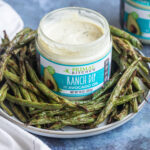 Air Fryer Green Beans – Quick and Easy Recipe! Author: Mark's Daily Apple
Air Fryer Green Beans – Quick and Easy Recipe! Author: Mark's Daily Apple  Total Time: 15 minutes
Total Time: 15 minutes  Yield: 3 servings [image error] Print Recipe [image error] Pin Recipe Description
Yield: 3 servings [image error] Print Recipe [image error] Pin Recipe Description The air fryer is the perfect appliance for making crispy, flavorful green beans. Served with Ranch Dip, they’re a finger food everyone will love!
Ingredients12 oz. trimmed green beans
1 Tbsp avocado oil
1 tsp onion powder
1/2 tsp garlic powder
1/2 tsp smoked paprika
1/4 tsp salt
1/4 tsp black pepper
Primal Kitchen Ranch Dip, for dipping
InstructionsToss the green beans in the oil and spices. Arrange the green beans in an air fryer basket.
Heat the air fryer to 375 degrees Fahrenheit (190 degrees Celsius). Place the basket in the air fryer and set the timer to 8 minutes. At the end of the 8 minutes, check the green beans for doneness. You most likely will need to give them a shake and air fry for an additional 2 minutes. When finished, the green beans should be golden on the outside and tender.
Serve the green beans with the dip and enjoy!
 Prep Time: 5 minutes
Prep Time: 5 minutes Cook Time: 8-10 minutes
Cook Time: 8-10 minutes Category: Side dish
Category: Side dish Method: Air fryer Nutrition Serving Size: 1/3 of recipe Calories: 85 Sugar: 4g Sodium: 204mg Fat: 5g Saturated Fat: 0.5g Trans Fat: 0g Carbohydrates: 9g Fiber: 3g Protein: 3g Cholesterol: 0mg Net Carbs: 6g
Method: Air fryer Nutrition Serving Size: 1/3 of recipe Calories: 85 Sugar: 4g Sodium: 204mg Fat: 5g Saturated Fat: 0.5g Trans Fat: 0g Carbohydrates: 9g Fiber: 3g Protein: 3g Cholesterol: 0mg Net Carbs: 6g  Did you make this recipe?
Did you make this recipe? Share a photo and tag Mark's Daily Apple — we can't wait to see what you've made!
The post Air Fryer Green Beans – Quick and Easy Recipe! appeared first on Mark's Daily Apple.


May 20, 2022
New and Noteworthy: What I Read This Week—Edition 178

Research of the Week
Super high HDL levels linked to cardiac events in people with heart disease.
Regulating “eating cues” can help people lose weight.
Alcohol-related deaths are way up.
Just a small amount of physical activity lowers depression risk.
Ketones may fight colorectal cancer.
New Primal Kitchen PodcastsPrimal Kitchen Podcast Episode 29: Childhood Behavior and Preconception Care with Pediatric Naturopathic Doctor, Ari Calhoun
Primal Health Coach Radio: Amanda Jane Snyder
Media, SchmediaEnvironmental toxins and obesity (even intergenerational obesity).
Lettuce is the most common cause of food poisoning.
Interesting Blog PostsExperts agree that diet can achieve type 2 diabetes remission. Finally!
Social NotesEverything ElseScientists grow plants in lunar soil (on Earth).
Does it really need to be “faster”?
Things I’m Up to and Interested InInteresting finding: Small talk is good, apparently.
Good news: Warming trends have slowed upon reevaluation of the data.
Interesting article: Is an ancient civilization buried under Turkey?
Use this as you will: Fasting appears to make muscle cells more resistant to stress.
One of my favorite foods: Blueberries may protect against midlife dementia.
Question I’m AskingDo you enjoy small talk?
Recipe CornerYes, I’m linking to a mayo-free coleslaw recipe.Instant Pot sticky spare ribs.Time CapsuleOne year ago (May 14 – May 20)
The Value of Eating What Your Ancestors Ate—Makes perfect sense.Keto on the Trail: What to Pack for Primal and Keto Camping, Hiking, and Backpacking —What to eat.Comment of the Week
“To expound on my initial comment, I agree with Mark that I am not optimistic about President Biden involving himself in Americans’ diet and nutrition choices. From what I’ve seen, even his most well-meaning efforts to address legitimate issues tend to only exacerbate them.
In my opinion, this should not be within the purview of the federal government, let alone the executive branch; it should be the concern only of the individual household. The federal/state governments can influence their respective corrections and military meal plans… however, Joe Biden (along with Donald Trump, Hillary Clinton, Michelle Obama, Joe Rogan, Alexandria Occasio-Cortez, Bill Gates, Robb Wolfe, Mark Sisson, Julia Child, etc.) will never effectively tell me what I can or cannot prepare in my own kitchen.”
-I think we can all agree there, hate_me. Except for Julia Child—I’d listen to her.
(function($) { $("#df9WuMm").load("https://www.marksdailyapple.com/wp-ad..." ); })( jQuery ); 
The post New and Noteworthy: What I Read This Week—Edition 178 appeared first on Mark's Daily Apple.


May 19, 2022
Ask a Health Coach: Seed Oils, Kiddos, and Eating Out
Hey folks, Board-Certified Health Coach Chloe Maleski is here to answer your questions about seed oils. Whether you’re wondering whether they’re really that bad, trying to avoid them when eating out, or scouting healthier treats for kids, you’ll learn some helpful tips and strategies. Got a question you’d like to ask our health coaches? Leave it below in the comments or over in the Mark’s Daily Apple Facebook group.
Marta asked:
“Are seed oils really that bad? Are they okay in moderation? They’re in all the foods my kid likes to eat! Crackers, granola bars, muffins… Not to mention when eating out!”
 Sigh… I know. Highly refined seed oils are cheap and everywhere. Yes, we find them in the usual suspects: fast food, highly processed food, and most conventional food that comes packaged and ready to eat. They also hide out where less expected, including in foods marketed as “healthy” and at restaurants and hot bars that might otherwise pass as Primal.
Sigh… I know. Highly refined seed oils are cheap and everywhere. Yes, we find them in the usual suspects: fast food, highly processed food, and most conventional food that comes packaged and ready to eat. They also hide out where less expected, including in foods marketed as “healthy” and at restaurants and hot bars that might otherwise pass as Primal.
Unfortunately, the answer to your first question is Yes. Highly refined seed and vegetable oils are That. Bad. Even in moderation, they can be detrimental to health.
While some folks are more sensitive to highly refined seed oils than others, they can cause inflammation in pretty much everyone. Chronic, systemic inflammation is a scourge of modern times. It’s implicated in countless minor ailments as well as more serious ones such as heart disease and cancer. It also weakens our general immune system response, since the body is too preoccupied with active, ongoing inflammation to deal properly with exposure to bacteria, fungi, and viruses.
Now, this doesn’t mean you have to (or can) avoid inflammatory oils entirely—particularly when eating out. Depending on priorities and life circumstances, this may be a great place to lean into the 80/20 principle: “In the context of full and earnest commitment, an overall 80 percent conformity with the 10 Primal Blueprint rules will yield a solidly healthy result.”
That’s not a green light for choosing foods containing seed oils 20 percent of the time. Highly processed, inflammatory oils are never healthy, even in moderation. But if you aim to avoid them completely and a little slips by on occasion, overall outcomes will still land on the side of healthy. In other words: do your best, but don’t stress about perfection.
Which oils are bad for you anyway?The fact that you’re asking these questions means you’re already on track! Once you know what to look for and find trusty staples, avoiding highly refined, inflammatory oils gets way easier.
As a starting place, let’s consider your kid’s favorites. Since crackers, granola bars, and muffins are usually snacks and treats rather than a primary food source, it’s best not to go overboard in any case (whether or not they contain unhealthy oils).
That said, sometimes a kid (or adult!) just wants a muffin. In those instances, you’re wise to check the ingredients when purchasing snacks and treats of any sort. Canola oil is an especially prevalent one to watch out for. Most canola oil is chemically extracted using the harsh petroleum-derived solvent hexane before undergoing other steps such as bleaching and deodorizing—all of which require heat and heat-generated degeneration. No need to remember these details! Just know that canola oil is neither a whole nor healthy food.
Other common culprits include soybean oil, corn oil, grapeseed oil, and safflower oil. Like canola, these generally undergo extensive industrial processing and often come from genetically modified, heavily pesticide-treated crops.
Not all oils are unhealthy, however! What’s more, a certain amount of processing is involved in producing oil of any sort. The key thing is to steer clear of those from pesticide-laden crops requiring processing on a large scale in industrial plants. You can find a handy comparison of healthy and unhealthy oils here, and can download the Free Guide to Fats and Oils here.
“But, mommmmm…”Does this mean no store-bought treats? Not necessarily! More and more Paleo and Primal brands are making helpful changes, including ditching inflammatory seed oils and opting for better-for-you alternatives such as avocado oil and coconut oil. Read your labels closely, stick with brands you trust, and you’ll find healthier options for satisfying that urge for packaged, ready-to-eat snacks and condiments.
If home cooking’s in the cards, you and your kiddo have even more healthy (or healthier) options! Our extensive recipe archive of Primal treats and Primal snacks is an excellent starting place. Also check out NomNom Paleo, where Paleo mom Michelle Tam shares an abundance of kid-friendly meal and meal prep inspiration.
If going the above route, you might even involve your kid in the process—gently planting the seed that “healthy food is tasty and cooking is fun.” Food preferences start early and can be much harder to shift later on.https://www.ncbi.nlm.nih.gov/pmc/arti... Whatever small steps you can take to make healthy swaps for you and your kid now, the less likely they’ll be hooked on unhelpful stuff later.
Of course, something that rarely works is pressuring kids into healthy choices! One of the best things you can do is model a Primal way of eating and living without making it too big of a deal. If you’re enjoying healthy, delicious food without extra fuss or stress, that will go far in nurturing healthy habits in kiddos.
As a Primal Health Coach, this is so cool to see! Just by shifting your own eating patterns and relationship with food, you’ll have a huge impact on any little ones watching.
And when eating out?Same goes for restaurants and hot bars: Ask about the ingredients, make polite requests, choose the best available options, and remember that 80/20 rule.
Restaurants are often open to steaming or grilling vegetables and serving any sauces or dressings on the side. If you find a restaurant willing to cook your food in butter or olive oil, all the better!
As more people make such requests and bring attention to unhealthy seed and vegetable oils, more restaurants are taking notice and offering alternatives. So long as you’re respectful and recognize that not all establishments are able or willing to make substitutions, asking never hurts and may help to create change.
If your kids are watching, all the better! This is a great opportunity for modeling kind, respectful inquiry and self-advocacy while starting conversations about why food choice matters.
I realize these are big topics for little ones… and for hardworking parents who have lots on their plates! By even asking these sorts of questions and being on the watch for unhealthy seed oils, you’re already doing great.
If you want backup, consider working with a health coach! It’s more accessible than you might think, and we can help map out healthier solutions for you and your family. Visit myprimalcoach.com to check it out and get started!
Have any Primal, kid-friendly treats to share? Or tips for avoiding seed oils when eating out? Drop them or other questions for me in the comments!
(function($) { $("#dfy1Hvk").load("https://www.marksdailyapple.com/wp-ad..." ); })( jQuery ); 
References https://www.ncbi.nlm.nih.gov/pmc/articles/PMC1351272/
The post Ask a Health Coach: Seed Oils, Kiddos, and Eating Out appeared first on Mark's Daily Apple.


May 18, 2022
More Questions on Creatine
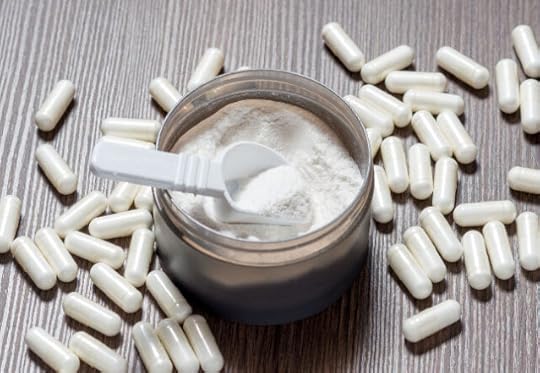 Creatine is an extremely popular supplement with thousands of studies attesting to its effectiveness in humans. It works well in athletes, older people, women, men, teens, vegans and vegetarians, and probably even children. It’s well-tested, safe in normal amounts, and there are very few downsides.
Creatine is an extremely popular supplement with thousands of studies attesting to its effectiveness in humans. It works well in athletes, older people, women, men, teens, vegans and vegetarians, and probably even children. It’s well-tested, safe in normal amounts, and there are very few downsides.
But because so many people use it, creatine also generates a lot of questions. Every time I do a post on creatine, I get more queries in my inbox.
Does it cause hair loss?How much should you take every day?Is there a good time to take it?Will creatine make you gain weight?And is creatine bad for the kidneys?What about side effects—anything we should worry about?Let’s dig right in and answer those questions.
Does creatine cause hair loss?This is a persistent concern, but there’s not much solid research lending credence to it. The majority of the “evidence” lies in an older study where college rugby players took creatine for a few weeks and saw their dihydrotestosterone, or DHT, rise over baseline. (The placebo control group saw no rise in DHT).https://www.ncbi.nlm.nih.gov/pubmed/1... DHT is a more active or potent form of testosterone that has powerful anabolic effects. It can also bind to hair follicles and cause them to shrink, reducing your ability to support a dense, healthy head of hair.
However, the creatine group had lower DHT levels at baseline, so it may be that the creatine was simply correcting lower starting levels. Other studies on creatine and testosterone have failed to find any consistent links between creatine and higher testosterone, free testosterone (from which DHT is produced), or DHT itself.
Finally, there are no studies showing that taking creatine causes hair loss. It’s not impossible or even improbable. It simply hasn’t been definitively shown.
Anecdotally, some people notice hair loss after starting creatine, but those are the toughest connections to draw without a control group and good methodology. Would they have lost the hair anyway? Were there other factors at play?
How much creatine per day?There are two basic strategies people commonly employ.
If you want to speed creatine uptake in the muscles, you can do a “loading phase” of 20 grams a day (split up into 4 doses) for a week before dropping down to 3 to 5 grams a day.
If you don’t, you can just take 3 to 5 grams a day from the get-go.
Both strategies work just fine.
If you have a lot of muscle mass—and thus higher creatine storage capacities—or if you burn through a lot of creatine with intense activity, you might benefit from larger daily doses in the 8 to 10 grams range.
Once you’ve been taking creatine consistently enough at high enough doses to saturate your muscle stores (20 grams a day for 5 to 7 days, or 3 to 5 grams a day for 28 days, to give two common examples), you can probably get away with “cycling” your creatine. Taking days off, doing lower doses here and there. Maybe even taking creatine “as needed” around resistance exercise, when you’re really going to use it. I’m just speculating here, but I think I’m right.
Whenever you take creatine, make sure you’re drinking plenty of water—more than normal. Otherwise it can cause stomach cramps.
Does creatine make you gain weight?In the first week or so, you will gain water weight as the body stores water along with creatine. This is completely normal and usually subsides after a few weeks. But what about “real” weight? Does it cause real weight gain?
Kinda.
Studies in both older men and older women have found that creatine use increases body mass.https://pubmed.ncbi.nlm.nih.gov/17943... https://pubmed.ncbi.nlm.nih.gov/11880... In other words, their BMI would have “worsened.”
What’s going on? Is creatine bad, then?
On the contrary, while creatine will increase body mass, creatine has never been shown to cause fat gain. Creatine will likely help you gain lean muscle mass by helping you lift more weight in the gym, maintain higher exercise intensities, and do higher-volume sets. The creatine isn’t directly causing the weight gain, but it is helping to enable it. This is “good weight.” This is the weight you want to gain. In all those “increased body mass” studies, the creatine also increased the amount of weight they were lifting and their performance in a broad range of physical activities. It was making them more robust.
Creatine may make you gain weight, but it’s the good kind of lean mass.
When should I take creatine?Creatine is more of a long-term supplement. It’s something that you “load” into your muscles and once it’s there, it stays until you expend it with intense activity. This is why many people go through the “loading” phase with 20 grams per day for a week until tapering off with lower doses—they want to speed up the saturation of creatine storage.
However, there are indications that timing your creatine intake can affect how well it works in your body.
One study found that taking creatine immediately after a workout led to better strength gains in the bench press, more lean mass, and lower fat mass than taking creatine immediately before a workout.pubmed.ncbi.nlm.nih.gov/23919405/&quo...
Another study using a creatine/carbohydrate/protein supplement found that it didn’t really matter whether you took it before or after a workout as long as you took it close to the workout. Both pre- and post-workout creatine were far more effective than taking it in the morning or night, well away from your workout.
Whatever you do, taking it close to training (before or after) seems to have the best effect.
Is creatine bad for the kidneys?If you have healthy kidney function, creatine is proven to be safe. Creatine excretion in the urine will rise, but this is considered to be a normal response to increased creatine intake and the sign of a healthy kidney function. Creatine supplementation has never been shown to cause impaired kidney function in healthy people with healthy kidneys at baseline. While there are case studies of renal dysfunction “accompanying” creatine supplementation, these cases were all confounded by variables like preexisting kidney disease, excessive dosing (100x what’s normally recommended), steroid use, and other medicines they were taking.https://pubmed.ncbi.nlm.nih.gov/96437...
If you have poor kidney health or function, supplemental creatine may be contraindicated. However, there is a case report of a young adult male with one kidney who was able to take creatine while eating a high protein diet and suffered no health consequences.https://pubmed.ncbi.nlm.nih.gov/20060... Whatever you do, if you’re worried about your kidneys or have impaired kidney function, check with your doctor before proceeding.
Are there any creatine side effects?Nothing is perfect. There are some potential complications or side effects, but they aren’t inevitable and you can usually avoid them with a few basic tips.
Cramps: Drink enough water and drink less alcohol. Creatine tends to increase water requirements, so make sure you drink enough water and get enough electrolytes. Read all about hydration here. Or just mix Gerolsteiner mineral water with sea salt and the juice from a lemon or lime. For serious electrolyte requirements, you can also make my “better Gatorade” by blending blackstrap molasses into coconut water with some lime or lemon juice and salt.
Gas, bloating, diarrhea: You took too much. Make sure you’re weighing and measuring your creatine doses. Also try taking creatine with some calories, with a meal (how you’d usually get creatine in natural settings).
That’s about it, folks. If you have any other questions about creatine, drop them down below.
(function($) { $("#dfJTymA").load("https://www.marksdailyapple.com/wp-ad..." ); })( jQuery ); 
References https://www.ncbi.nlm.nih.gov/pubmed/19741313https://pubmed.ncbi.nlm.nih.gov/17943308/https://pubmed.ncbi.nlm.nih.gov/11880821/pubmed.ncbi.nlm.nih.gov/23919405/https://pubmed.ncbi.nlm.nih.gov/9643752/https://pubmed.ncbi.nlm.nih.gov/20060630/
The post More Questions on Creatine appeared first on Mark's Daily Apple.


May 17, 2022
Introducing the Two Meals A Day Cookbook!
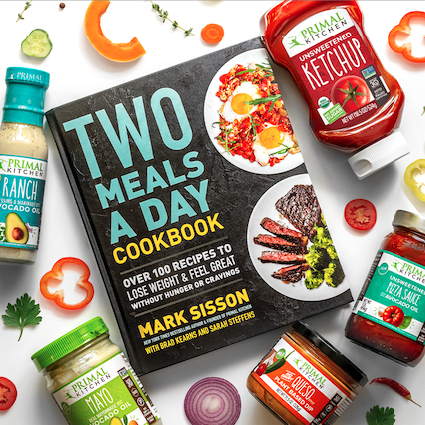 Greetings, readers! I’ve been so heartened over the past year with the great response to the book Two Meals A Day, which we launched in March, 2021. It’s particularly interesting to note how many new people have been welcomed into the fold of ancestral living via the portal of a mainstream-appeal book about healthy living. My writing partner Brad Kearns and I intended for this book to reach a broader audience outside the existing spheres of Primal/paleo and keto, so we placed the focus on ditching processed foods, emphasizing nutrient-dense ancestral foods, and eating less frequently—pretty simple! We’ve received great comments from readers who then discovered Marks Daily Apple, the many Primal Blueprint book titles, and generally became further captivated by Primal living.
Greetings, readers! I’ve been so heartened over the past year with the great response to the book Two Meals A Day, which we launched in March, 2021. It’s particularly interesting to note how many new people have been welcomed into the fold of ancestral living via the portal of a mainstream-appeal book about healthy living. My writing partner Brad Kearns and I intended for this book to reach a broader audience outside the existing spheres of Primal/paleo and keto, so we placed the focus on ditching processed foods, emphasizing nutrient-dense ancestral foods, and eating less frequently—pretty simple! We’ve received great comments from readers who then discovered Marks Daily Apple, the many Primal Blueprint book titles, and generally became further captivated by Primal living.
It was also great to hear from many die-hard followers about how this book tied many insights and nuances of Primal living together nicely. It has become a popular gift for family and friends to gently introduce a new and sustainable way of ancestral-inspired eating and living.
Buoyed by this success, we are pleased to announce the launch of the Two Meals A Day Cookbook, filled with over 100 delicious recipes of incredible variety to appeal to a broad audience.
Introducing The Two Meals A Day Cookbook: Mouthwatering Recipes Plus a Great Overview of the LifestyleIn addition to more than 100 fantastic recipes, the Two Meals A Day Cookbook also contains nine action items that will get you focused and inspired to take immediate action toward your goals, inspired by the original Two Meals A Day book. In this post, I’ll give you a quick overview of this juicy section titled, “Nine Steps To Success With Two Meals A Day.”
The Two Meals A Day Cookbook is available for pre-order at your favorite booksellers. Please visit TwoMealsADaybook.com to take advantage of some great pre-order bonus items, including discounts on Primal Kitchen products, an audio summary of the Two Meals A Day lifestyle, and a sneak peek of some of the great recipes. Just place your pre-order with your favorite bookseller and register for the bonus items at TwoMealsADaybook.com.
Nine Steps to Success with Two Meals A DayOver the past 16 years at Marks Daily Apple, it’s been an extreme pleasure to interact with you on a deep level to explore all aspects of Primal living. I encourage you to read Two Meals A Day to enjoy a comprehensive presentation on all aspects of healthful eating and complementary lifestyle practices, but I believe you can get the essence of this way of life by carefully reviewing and “owning” the following nine compelling tenants from the book.
These are each covered in detail in the new cookbook, so here is a little teaser to enjoy for now:
DITCH THE “BIG THREE” OFFENSIVE MODERN FOODSThe most important and urgent dietary modification is to eliminate what we call the “Big Three” problematic modern foods: refined sugars, grains, and industrial seed oils. You will find these offensive ingredients in most packaged, processed, and frozen foods in the supermarket, and in most convenience store and fast-food offerings.
You can experience an amazing health transformation from eliminating these foods that inhibit the burning of body fat and promote carbohydrate dependency, insulin resistance, inflammation, and type 2 diabetes. Cleaning up your diet is the mandatory first step to escaping epidemic disease patterns and unlocking your genetic ability to preferentially burn fat for fuel. Don’t pass Go and don’t bother with any other details until you clean up your diet.
EMPHASIZE ANCESTRAL FOODSGo Primal! While I strongly support personal preference as the driving force in your dietary choices, we must always honor our genetic expectations for health and choose from the natural plant and animal foods that fueled human evolution for 2.5 million years: meat, fish, fowl, eggs, vegetables, fruits, nuts, and seeds, and of course the Primal-approved healthful modern foods, including organic high-fat dairy products and high-cacao-percentage bean-to-bar dark chocolate. From this broad list, you can certainly exclude foods you don’t enjoy and emphasize foods and meals that you have discovered work well for you. It’s important to choose wisely in each category, and this is possible even on a budget. To prioritize the most nutrient-dense foods from the Primal list, download Brad’s handy “Carnivore Scores Food Rankings Chart.” You’ll notice things like grass-fed liver, sardines and other oily, cold water fish, pastured eggs, and other budget-friendly items at the top of the rankings!
WHEN YOU EAT IS JUST AS IMPORTANT AS WHAT YOU EATToday’s epidemic rates of insulin resistance, type 2 diabetes, obesity, cancer, heart disease, and all other diet-related diseases and dysfunctions are driven by eating too much of the wrong foods, too often. We’ve all heard plenty of commentary about the hazards of junk food and the wonders of nutritious food, but not enough attention is paid to eating frequency. When we eat and snack throughout our waking hours (even when taking care to consume nutritious foods), we can still inhibit fat burning and fat loss, promote systemic inflammation, overproduce insulin, and dysregulate important hormonal functions.
Of course, we need calories to fuel our bodies for busy days and ambitious workouts, but we have forgotten our magnificent, genetically hardwired ability to store, manufacture, and burn various forms of energy to enjoy active, productive lifestyles. Homo sapiens possess what I like to call “closed-loop functionality.” We can maintain steady energy and alertness all day long, regardless of the type of calories we ingest or how frequently we ingest them. These mechanisms evolved by necessity to survive the rigors of primal life, when there was no guarantee of a “next meal.”
The idea with Two Meals A Day is to naturally and gracefully progress from whatever your starting point is—without any pain, struggle, sacrifice, or deprivation—to enjoying a maximum of two nutritious meals a day with little or no snacking. While my typical daily pattern involves a midday lunch and an evening meal, there are many days where I’ll have only one major meal, paired with an extended fast or a mini-meal at another time of day. This strategy is especially effective when traveling, as I believe fasting during the journey and then immediately synching your meals to your new time zone is a fantastic strategy to beat jet lag.
DO IT THE RIGHT WAYThe comprehensive health benefits and fat loss potential of eating two meals a day is only possible when you are able to burn stored body fat effectively. If you try to jump into aggressive fasting or carb restriction efforts without first establishing the ability to burn stored body fat, you are going to struggle royally and trigger a prolonged fight-or-flight reaction. Eventually, you’ll experience the backsliding and burnout that are so common with ill-advised crash diets. Hence, it’s essential to proceed step-by-step toward metabolic flexibility; adopt a comprehensive lifestyle approach with attention to fitness, sleep, and stress management; and never take on any challenges that make you feel fatigued, frustrated, or discouraged.
A safe and effective way to hone skills of fasting and metabolic flexibility is to simply wait until WHEN (when hunger ensues naturally) to eat your break-fast meal every day. This takes the pressure off having to reach arbitrary mealtime goals, such as the more advanced 16:8 strategy. Even more importantly, the WHEN strategy will reestablish your long-lost hunger and satiety signals, which have been compromised by overeating and the regimented meal patterns that have become cultural norms.
GET YOUR MIND RIGHTIt’s easy to get frustrated, confused, and discouraged when pursuing diet and fitness goals with the typical “struggle and suffer” approach. It’s time to eliminate and reframe self-limiting beliefs, forgive yourself for past failures, and form an empowering new mindset that you deserve exceptional health and the body that you dream of. Believing this deeply (and reaffirming it regularly through journaling, positive affirmations, and making healthy choices) will help you stay focused and leverage small successes into long-term habits.
Strive to appreciate the process and not become overly fixated on results. Changes will come naturally when you feed and care for your body at the highest possible standards of health. If you notice old destructive thoughts and behavior patterns creeping into the picture, you can gently take control of your thoughts and emotions instead of panicking and backsliding.
FOLLOW A FAT-BURNING LIFESTYLEHealthy eating is only one piece of the big picture. Complementary lifestyle habits can make or break your efforts toward dietary transformation. We have a critical need not only to optimize sleep but to constantly balance stressful daily life with sufficient recovery and down time. The most urgent objective is to minimize artificial light and electronic stimulation after dark. Cultivate calm, dark, mellow evenings so you can transition gracefully into a good night’s sleep. It’s also important to discipline your use of technology to achieve regular downtime from hyperconnectivity. This will allow your brain to refresh and refocus on peak cognitive tasks and renew your appreciation for live social interaction and the simple pleasures of life such as appreciating nature.
On the topic of recovery, devoted fitness enthusiasts must take care to avoid even the slightest whiff of chronic exercise patterns. Emphasize cardio workouts in the aerobic zone, make your high-intensity sessions explosive, precise in technique, and brief in duration. Increase all forms of general everyday movement, including the microworkouts that can be so helpful for dietary transformation and fat reduction.
INCREASE GENERAL EVERYDAY MOVEMENTIncreasing all forms of general everyday movement, especially taking breaks from prolonged periods of stillness, is just as important as following a devoted workout regimen. Calories burned during workouts don’t contribute to fat loss as much as we’d like to believe, but moving throughout the day prompts the genetic signaling for fat burning and appetite regulation. Walking should be the central focus of your movement activity, and you can also engage in dynamic stretching, calisthenics, briefs burst of explosive exercise (microworkouts), and formal movement practices such as yoga, Pilates, and tai chi.
Please don’t feel intimidated by another “to-do list” item of taking long walks or other prolonged cardio sessions to meet a movement quota. A few minutes here and there add up to huge benefits, especially as it relates to getting up from stints at your desk or on the couch. Similarly, while a yoga class can be a blissfully immersive mind and body experience, doing short pose sequences here and there on days when you’re pressed for time can augment your formal classes.
CONDUCT BRIEF, EXPLOSIVE WORKOUTSTraditional fitness programming tends toward excessive and overly stressful steady-state cardio exercise, or the popular but often exhausting High-intensity Interval Training (HIIT) protocol. Research is conclusive that challenging your body with occasional brief, explosive, all-out efforts of resistance exercises or sprints delivers phenomenal fitness benefits. This is the missing link for many devoted fitness enthusiasts!
The trick is to challenge your body with maximum efforts that elicit temporary muscular failure. This will prompt profound genetic signaling to become stronger, faster, leaner, and more resilient. While there are numerous benefits to leading an active lifestyle featuring assorted forms of exercise, you will get vastly more return on investment when you go hard once in a while.
Limit your all-out efforts to less than ten seconds so you can achieve maximum force production throughout the sprint down the track or during a set of aggressive kettlebell swings. Then, take extensive recovery time between efforts—at least a 6:1 rest-to-work ratio (10 seconds of work pairs with 1 minute of rest). While adding explosive workouts is critical to your success, you must also take extra care to avoid overtaxing yourself during these sessions. If you experience recurring muscle soreness after tough sessions, dial everything back a few notches so you don’t have to routinely allocate extra resources to repairing muscle damage.
PURSUE BIG BREAKTHROUGHS!After you have done the hard work to ditch the Big Three toxic modern foods, emphasize nutrient-dense ancestral foods, and adopt the complementary lifestyle behaviors of excellent sleep, frequent movement, high-intensity workouts, and rest and recovery, you are poised to pursue ambitious body composition and performance goals. Advanced techniques can be very effective when you want to take those often-difficult incremental gains from good to great. To drop excess body fat and keep it off, you need to shock your body with occasional stressors that are brief and deliver a net adaptive benefit. The book contains helpful instructions to put into action things like extended fasting, fasted workouts, sprinting (“Nothing cuts you up like sprinting” is one of my favorite quips ever), and therapeutic cold exposure (watch Brad’s “Chest Freezer Cold Therapy” video for more details).
Remember, you can get a great kit of pre-order bonus items at TwoMealsADayBook.com. Order your copy from your favorite bookseller (links are provided at website) and then complete the bonus item form for instant access to these digital gifts, including a discount code to use when ordering your favorite Primal Kitchen products!
(function($) { $("#dfGh0QE").load("https://www.marksdailyapple.com/wp-ad..." ); })( jQuery );
The post Introducing the Two Meals A Day Cookbook! appeared first on Mark's Daily Apple.


May 16, 2022
Keto Sandwich Roll-ups with Dipping Sauce – Two Ways!
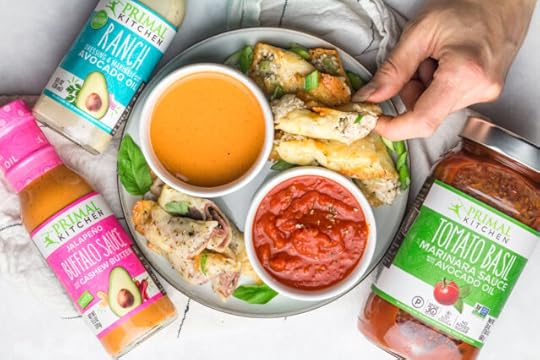 Searching for a good keto sandwich option, no bread required? Well look no further than these low-carb, grain-free meat and cheese roll-ups. Who needs bread or a tortilla when you have all this deliciousness? After all, the best part of sandwiches isn’t the bread. It’s what’s inside that really matters.
Searching for a good keto sandwich option, no bread required? Well look no further than these low-carb, grain-free meat and cheese roll-ups. Who needs bread or a tortilla when you have all this deliciousness? After all, the best part of sandwiches isn’t the bread. It’s what’s inside that really matters.
And these keto roll-ups aren’t your average lettuce wrap! Nope, these feature crispy cheese on the outside with savory fillings, perfectly paired with some of our favorite dipping sauces. Enjoy them warm for an easy work-from-home lunch or after-school snack. Chilled, they’re great for lunchboxes or hitting the trail. A sandwich roll-up is a nice break from trail mix when you’re on a long hike. Throw them in an insulated lunch bag with a lightweight ice pack, and you’re good to go.
This recipe suggests making them in an oven, but a toaster oven will also work. Use the ideas below as inspiration to come up with your own meat, cheese, and sauce creations.
Keto Sandwich Roll-ups with Dipping Sauce RecipesMakes: 3 roll-ups for each recipe variation (1 serving)
Time in the kitchen: 10 – 12 minutes
Italian Cheese Roll-upsIngredients3 slices mozzarella cheese6 slices pepperoni or salami3 fresh basil leavesItalian seasoningPrimal Kitchen Tomato Basil Marinara Sauce for dippingDirectionsPreheat your oven to 375 degrees Fahrenheit (190 degrees Celsius). Line a sheet pan with parchment paper.
Arrange your slices of cheese on the pan. Layer the pepperoni or salami along the center of the cheese with a leaf or two of basil and sprinkle it with Italian seasoning. Place the sheet pan in the oven for 5 to 7 minutes, or until the cheese starts to crisp on the outside edges.
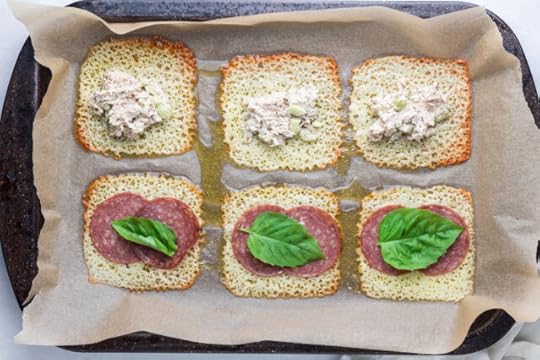
Remove from the oven and quickly and carefully roll the cheese up diagonally until each one is in a cylinder rolled-up shape. Use a spatula to prevent burning your fingers.
Once the cheese slightly cools, slice in half and sprinkle with more Italian seasoning, then dip into your favorite Primal Kitchen marinara sauce!
Buffalo Chicken Cheese Roll-upsIngredients3 slices cheddar cheese2 oz. cooked shredded chicken breast1 stalk celery, finely chopped1½ tablespoons Primal Kitchen Ranch DressingPrimal Kitchen Jalapeño Buffalo or Buffalo Sauce to taste, plus extra for dippingSliced green onion for garnishDirectionsPreheat your oven to 375 degrees Fahrenheit (190 degrees Celsius). Line a sheet pan with parchment paper.
Arrange your slices of cheese on the pan. In a small bowl, mix together the chicken breast, celery, Ranch Dressing, and Buffalo Sauce to taste. Place a dollop of the chicken mixture in the center of each piece of cheese.
Place the sheet pan in the oven for 5 to 7 minutes, or until the cheese starts to get crispy on the outer edges. Remove from the oven and quickly and carefully roll the cheese up diagonally until each one is in a cylinder rolled-up shape. Use a spatula to prevent burning your fingers.
Once the cheese cools slightly, slice in half and garnish with sliced green onion. Dip into Buffalo Sauce or Ranch Dressing!
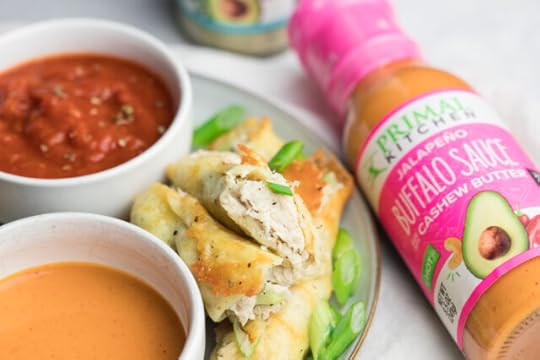
 Print.tasty-recipes-print-button{background-color:#667;border:none;display:inline-block;padding:.5em 1em;text-decoration:none}body:not(.tasty-recipes-print-view) .tasty-recipes-print-button.tasty-recipes-print-above-card{color:#fff;display:none}body:not(.tasty-recipes-print-view) .tasty-recipes-print-button.tasty-recipes-print-above-card:hover{background-color:#b2b2bb;color:#fff;display:inline-block;padding:.5em 1em;text-decoration:none}.tasty-recipes-image-button-container{display:flex;flex-direction:column;flex-wrap:wrap;float:right;margin-left:10px}body.tasty-recipes-print-view .tasty-recipes-buttons{display:none}.tasty-recipes-image-button-container .tasty-recipes-buttons{margin-bottom:10px;margin-top:10px}.tasty-recipes-image-button-container .tasty-recipes-button-wrap{box-sizing:border-box;margin-bottom:10px}.tasty-recipes-image-button-container .tasty-recipes-buttons a{background-color:#f9f9f9;border:1px solid #aaa;border-radius:0;color:#aaa;display:block;font-size:16px;font-weight:700;line-height:16px;margin-top:0;padding:8px;text-align:center;text-decoration:none;text-transform:uppercase}.tasty-recipes-image-button-container .tasty-recipes-buttons .button:hover{background-color:#aaa;border:1px solid #aaa;color:#fff;opacity:1}.tasty-recipes-image-button-container .tasty-recipes-buttons a:hover{background-color:#979599;text-decoration:none}.tasty-recipes-image-button-container .tasty-recipes-buttons svg{display:none}.tasty-recipes-yield-scale{border:1px solid #979599;border-radius:2px;color:#979599;font-size:.7rem;margin-left:3px;padding:0 4px}.tasty-recipes-units-scale-container{display:flex;flex-wrap:wrap}.tasty-recipes-convert-container{padding:0 1em 1em 0}.tasty-recipes-convert-container .tasty-recipes-convert-label{align-self:center;color:#979599;font-size:.6rem;text-transform:uppercase}.tasty-recipes-convert-container button{background:transparent;border:1px solid #979599;border-radius:2px;color:#979599;letter-spacing:0;margin-left:5px;min-width:34px;padding:2px 4px;text-align:center}.tasty-recipes-convert-container button.tasty-recipes-convert-button-active{border-color:#353547;color:#353547}.tasty-recipes-convert-container button:focus{outline:none}.tasty-recipes-scale-container{display:flex;padding:0 0 1em}.tasty-recipes-scale-container .tasty-recipes-scale-label{align-self:center;color:#979599;font-size:.6rem;text-transform:uppercase}.tasty-recipes-scale-container button{background:transparent;border:1px solid #979599;border-radius:2px;color:#979599;letter-spacing:0;margin-left:5px;min-width:34px;padding:2px 4px}.tasty-recipes-scale-container button.tasty-recipes-scale-button-active{border-color:#353547;color:#353547}.tasty-recipes-scale-container button:focus{outline:none}.tasty-recipes-ingredients-header{margin:1em 0}@media only screen and (min-width:520px){.tasty-recipes-ingredients-header{align-items:center;display:flex;flex-wrap:wrap;justify-content:space-between}}.tasty-recipes-ingredients-header .tasty-recipes-ingredients-clipboard-container{align-items:baseline;display:inline-flex}.tasty-recipes-ingredients-header h3{margin:0 10px 10px 0}.tasty-recipes-ingredients-clipboard-container .tasty-recipes-copy-button{background:transparent;border:none;color:#353547;height:24px;padding:0;position:relative;width:24px}.tasty-recipes-ingredients-clipboard-container .tasty-recipes-copy-button:hover{opacity:.5}.tasty-recipes-instructions-header{align-items:baseline;display:flex;flex-wrap:wrap;justify-content:space-between;margin:1em 0}.tasty-recipes-entry-content .tasty-recipes-instructions h3{margin:0 0 1rem}@media only screen and (min-width:520px){.tasty-recipes-entry-content .tasty-recipes-instructions h3{margin:0}}button[name=tasty-recipes-video-toggle]{background:#979599;border:#979599;border-radius:2px;display:inline-block;font-size:14px;height:30px;line-height:20px;margin:0;padding:0;text-align:center;vertical-align:middle;width:86px}button[name=tasty-recipes-video-toggle] span{padding:0 4px;pointer-events:none}button[name=tasty-recipes-video-toggle][aria-checked=false] :last-child,button[name=tasty-recipes-video-toggle][aria-checked=true] :first-child{background:#fff;border-radius:2px;color:#979599;padding:2px 4px}button[name=tasty-recipes-video-toggle][aria-checked=false] :first-child,button[name=tasty-recipes-video-toggle][aria-checked=true] :last-child{color:#fff}label[for=tasty-recipes-video-toggle]{color:#979599;font-size:.6rem;line-height:30px;padding-right:8px;text-transform:uppercase;user-select:none;-moz-user-select:none;-ms-user-select:none;-webkit-user-select:none;-o-user-select:none;vertical-align:middle}.tasty-recipe-responsive-iframe-container{margin:10px 0}.tasty-recipes-equipment{display:flex;flex-wrap:wrap;justify-content:space-evenly}.tasty-recipes-equipment>h3{flex:0 0 100%}.tasty-recipes-equipment .tasty-link-card{flex:0 0 50%;padding:1.5rem 1rem;text-align:center}@media screen and (min-width:500px){.tasty-recipes-equipment .tasty-link-card{flex:0 0 33%}}.tasty-recipes-equipment .tasty-link-card p{font-size:1em;font-weight:700;margin-bottom:0}.tasty-recipes-equipment .tasty-link-card p a{color:initial}.tasty-recipes-equipment .tasty-link-card span{font-size:.9em}.tasty-recipes .tasty-recipes-nutrition ul{list-style-type:none;margin:0;padding:0}.tasty-recipes .tasty-recipes-nutrition ul:after{clear:both;content:" ";display:block}.tasty-recipes .tasty-recipes-nutrition li{float:left;list-style-type:none;margin-bottom:0;margin-left:0;margin-right:16px}.tasty-recipes-plug{align-items:center;display:flex;flex-wrap:wrap;justify-content:center;margin-bottom:1em;text-align:center}.tasty-recipes-plug a{box-shadow:none;text-decoration:none}.tasty-recipes-plug a img{display:inline-block;height:auto;margin:5px 0 0 8px;width:150px}.tasty-recipes-footer-content{padding:1.5em;text-align:center}.tasty-recipes-footer-content .tasty-recipes-footer-copy{margin-left:0}.tasty-recipes-footer-content img,.tasty-recipes-footer-content svg{width:60px}.tasty-recipes-entry-content .tasty-recipes-entry-footer h3{font-size:1.25em;margin:0 0 .25em;padding:0}.tasty-recipes-entry-footer p{font-size:.75em;margin:0}.tasty-recipes-entry-footer p a{border-bottom:none;box-shadow:none;text-decoration:underline}.tasty-recipes-flash-message{background-color:#fff;border-radius:4px;box-shadow:0 .3px .4px 0 rgba(0,0,0,.024),0 .9px 1.5px 0 rgba(0,0,0,.05),0 3.5px 6px 0 rgba(0,0,0,.1);color:#313135;display:inline-block;font-size:13px;letter-spacing:0;line-height:1.2em;margin-left:10px;padding:4px 10px}@media screen and (min-width:500px){.tasty-recipes-flash-message{padding:4px 10px}}.tasty-recipes-flash-message p{margin:0;padding:0;text-transform:none}@media screen and (min-width:500px){.tasty-recipes-footer-content{align-items:center;display:flex;justify-content:center;padding:1.5em 0;text-align:left}.tasty-recipes-footer-content .tasty-recipes-footer-copy{margin-left:.8em}}@media print{.tasty-recipes-no-print,.tasty-recipes-no-print *{display:none!important}}[data-tr-ingredient-checkbox]{cursor:pointer;list-style-position:outside;list-style-type:none!important;margin-left:0!important}[data-tr-ingredient-checkbox] .tr-ingredient-checkbox-container{position:relative}[data-tr-ingredient-checkbox] .tr-ingredient-checkbox-container input[type=checkbox]+label{display:inline-block;position:relative;vertical-align:middle}[data-tr-ingredient-checkbox] .tr-ingredient-checkbox-container input[type=checkbox]{clip:rect(1px 1px 1px 1px);clip:rect(1px,1px,1px,1px);height:1px;overflow:hidden;position:absolute!important;width:1px}[data-tr-ingredient-checkbox] .tr-ingredient-checkbox-container input[type=checkbox]+label:before{border:1px solid;border-radius:2px;content:"";display:inline-block;height:20px;margin-right:10px;position:relative;width:20px}[data-tr-ingredient-checkbox] .tr-ingredient-checkbox-container input[type=checkbox]:checked+label:after{border-bottom:2px solid;border-left:2px solid;content:"";display:inline-block;height:6px;left:4px;position:absolute;top:4px;transform:rotate(-45deg);width:12px}[data-tr-ingredient-checkbox] .tr-ingredient-checkbox-container input[type=checkbox]:focus+label:before{box-shadow:0 0 8px #5e9ed6;outline:1px solid #5d9dd5}[data-tr-ingredient-checkbox=checked]{opacity:.8;text-decoration:line-through}/* Bold recipe card styles. */ .tasty-recipes{border:5px solid #667;margin-top:6em;margin-bottom:4em}.tasty-recipes.tasty-recipes-has-plug{margin-bottom:1em}.tasty-recipes-plug{margin-bottom:4em}.tasty-recipes-print-button{display:none}.tasty-recipes-image-shim{height:69.5px;clear:both}.tasty-recipes-entry-header{background-color:#667;color:#fff;text-align:center;padding-top:35px;padding-bottom:1.5em;padding-left:2.5em;padding-right:2.5em}.tasty-recipes-entry-header.tasty-recipes-has-image{padding-top:0px}.tasty-recipes-entry-header .tasty-recipes-image{float:none;text-align:center;transform:translateY(-115px);margin-bottom:1em;/* Decide if we need this */}.tasty-recipes-entry-header .tasty-recipes-image img{-webkit-border-radius:50%;-moz-border-radius:50%;border-radius:50%;border:5px solid #667;height:150px;width:150px;display:inline-block;object-fit:cover}.tasty-recipes-entry-header h2{font-size:2em;font-weight:400;text-transform:lowercase;margin-bottom:0;text-align:center;color:#fff;margin-top:0;padding-top:0;padding-bottom:0}.tasty-recipes-has-image .tasty-recipes-entry-header h2{margin-top:-115px}.tasty-recipes-entry-header hr{border:1px solid #b7bbc6;background-color:#b7bbc6;margin-bottom:1em;margin-top:1em}.tasty-recipes-entry-header div.tasty-recipes-rating{text-decoration:none;border:none}.tasty-recipes-entry-header .tasty-recipes-rating:hover{text-decoration:none}.tasty-recipes-entry-header div.tasty-recipes-rating{font-size:1.375em;display:block}.tasty-recipes-entry-header .tasty-recipes-rating p{margin-bottom:0}.tasty-recipes-entry-header span.tasty-recipes-rating{margin-left:0.25em;margin-right:0.25em;color:#fff}.tasty-recipes-entry-header .rating-label{font-style:italic;color:#b7bbc6;font-size:0.6875em;display:block}.tasty-recipes-entry-header .tasty-recipes-details{margin-top:1em}.tasty-recipes-entry-header .tasty-recipes-details ul{list-style-type:none;margin:0}.tasty-recipes-entry-header .tasty-recipes-details ul li{display:inline-block;margin-left:0.5em;margin-right:0.5em;font-size:1em;line-height:2.5em;color:#fff}@media only screen and (max-width:520px){.tasty-recipes-entry-header .tasty-recipes-details .detail-icon{height:0.8em;margin-top:0.4em}.tasty-recipes-entry-header .tasty-recipes-details ul li{font-size:0.875em;line-height:1.75em}}@media only screen and (min-width:520px){.tasty-recipes-entry-header .tasty-recipes-details .detail-icon{height:1em;margin-top:0.6em}.tasty-recipes-entry-header .tasty-recipes-details ul li{font-size:1em;line-height:2.5em}}.tasty-recipes-entry-header .tasty-recipes-details .tasty-recipes-label{font-style:italic;color:#b7bbc6;margin-right:0.125em}.tasty-recipes-entry-header .tasty-recipes-details .detail-icon{vertical-align:top;margin-right:0.2em;display:inline-block;color:#FFF}.tasty-recipes-entry-header .tasty-recipes-details .author a{color:inherit;text-decoration:underline}.tasty-recipes-entry-content{padding-top:1.25em}.tasty-recipes-entry-content .tasty-recipes-buttons{margin-bottom:1.25em;margin-left:1.25em;margin-right:1.25em}.tasty-recipes-entry-content .tasty-recipes-buttons:after{content:' ';display:block;clear:both}.tasty-recipes-entry-content .tasty-recipes-button-wrap{width:50%;display:inline-block;float:left;box-sizing:border-box}.tasty-recipes-entry-content .tasty-recipes-buttons a{text-transform:uppercase;text-align:center;display:block;color:#fff;background-color:#667;font-size:1em;line-height:1.375em;padding-top:1em;padding-bottom:1em;font-weight:bold;margin-top:0;border:none;border-radius:0;text-decoration:none}.tasty-recipes-entry-content a img{box-shadow:none;-webkit-box-shadow:none}.tasty-recipes-entry-content .tasty-recipes-buttons a:hover{background-color:#979599;text-decoration:none}.tasty-recipes-entry-content .tasty-recipes-buttons img{vertical-align:top}.tasty-recipes-entry-content .tasty-recipes-buttons .svg-print,.tasty-recipes-entry-content .tasty-recipes-buttons .svg-pinterest,.tasty-recipes-entry-content .tasty-recipes-buttons .svg-heart-regular,.tasty-recipes-entry-content .tasty-recipes-buttons .svg-heart-solid{height:1.25em;margin-right:0.375em;margin-bottom:0;background:none;display:inline-block;vertical-align:middle}@media only screen and (min-width:520px){.tasty-recipes-entry-content .tasty-recipes-button-wrap:first-child{padding-right:0.625em}.tasty-recipes-entry-content .tasty-recipes-button-wrap:last-child{padding-left:0.625em}}@media only screen and (max-width:520px){.tasty-recipes-entry-content .tasty-recipes-button-wrap{width:100%}.tasty-recipes-entry-content .tasty-recipes-button-wrap:nth-child(2){padding-top:1em}}.tasty-recipes-entry-content h3{text-transform:uppercase;font-size:0.75em;color:#979599;margin:1.5em 0}.tasty-recipes-ingredients-header,.tasty-recipes-instructions-header{margin:1.5em 0}.tasty-recipes-entry-content h4{font-size:1em;padding-top:0;margin-bottom:1.5em;margin-top:1.5em}.tasty-recipes-entry-content hr{background-color:#eae9eb;border:1px solid #eae9eb;margin-top:1em;margin-bottom:1em}.tasty-recipes-entry-content .tasty-recipes-description,.tasty-recipes-entry-content .tasty-recipes-ingredients,.tasty-recipes-entry-content .tasty-recipes-instructions,.tasty-recipes-entry-content .tasty-recipes-keywords{padding-left:1.25em;padding-right:1.25em}.tasty-recipes-entry-content .tasty-recipes-description h3{display:none}.tasty-recipes-entry-content .tasty-recipes-description p{margin-bottom:1em}.tasty-recipes-entry-content .tasty-recipes-ingredients ul,.tasty-recipes-entry-content .tasty-recipes-instructions ul{list-style-type:none;margin-left:0;margin-bottom:1.5em;padding:0}.tasty-recipes-entry-content .tasty-recipes-ingredients ul li,.tasty-recipes-entry-content .tasty-recipes-instructions ul li{margin-bottom:0.625em;list-style-type:none;position:relative;margin-left:1.5em;line-height:1.46}.tasty-recipes-entry-content .tasty-recipes-ingredients ul li:before,.tasty-recipes-entry-content .tasty-recipes-instructions ul li:before{background-color:#667;-webkit-border-radius:50%;-moz-border-radius:50%;border-radius:50%;height:0.5em;width:0.5em;display:block;content:' ';left:-1.25em;top:0.375em;position:absolute}.tasty-recipes-entry-content .tasty-recipes-ingredients ol,.tasty-recipes-entry-content .tasty-recipes-instructions ol{counter-reset:li;margin-left:0;padding:0}.tasty-recipes-entry-content .tasty-recipes-ingredients ol>li,.tasty-recipes-entry-content .tasty-recipes-instructions ol>li{list-style-type:none;position:relative;margin-bottom:1em;margin-left:1.5em;line-height:1.46}.tasty-recipes-entry-content .tasty-recipes-ingredients ol>li:before,.tasty-recipes-entry-content .tasty-recipes-instructions ol>li:before{content:counter(li);counter-increment:li;position:absolute;background-color:#667;-webkit-border-radius:50%;-moz-border-radius:50%;border-radius:50%;height:1.45em;width:1.45em;color:#fff;left:-1.25em;transform:translateX(-50%);line-height:1.5em;font-size:0.6875em;text-align:center;top:0.1875em}.tasty-recipes-entry-content .tasty-recipes-ingredients li li,.tasty-recipes-entry-content .tasty-recipes-instructions li li{margin-top:0.625em}.tasty-recipes-entry-content .tasty-recipes-ingredients li ul,.tasty-recipes-entry-content .tasty-recipes-ingredients li ol,.tasty-recipes-entry-content .tasty-recipes-instructions li ul,.tasty-recipes-entry-content .tasty-recipes-instructions li ol{margin-bottom:0}.tasty-recipes-entry-content .tasty-recipes-equipment{padding-left:1.25em;padding-right:1.25em}.tasty-recipes-entry-content .tasty-recipe-video-embed~.tasty-recipes-equipment{padding-top:1em}.tasty-recipes-entry-content .tasty-recipes-notes{padding:1.25em;background-color:#edf0f2}.tasty-recipes-entry-content .tasty-recipes-notes ol{counter-reset:li;margin-left:0;padding:0}.tasty-recipes-entry-content .tasty-recipes-notes ul{margin-left:0;padding:0}.tasty-recipes-entry-content .tasty-recipes-notes p,.tasty-recipes-entry-content .tasty-recipes-notes ul,.tasty-recipes-entry-content .tasty-recipes-notes ol{background-color:#fff;padding-left:1.5625em;padding-right:1.5625em;padding-top:1.25em;padding-bottom:1.25em;margin-bottom:1.5em;position:relative;-webkit-clip-path:polygon(20px 0,100% 0,100% 100%,0 100%,0 20px);clip-path:polygon(20px 0,100% 0,100% 100%,0 100%,0 20px)}@media only screen and (min-width:520px){.tasty-recipes-entry-content .tasty-recipes-notes ul,.tasty-recipes-entry-content .tasty-recipes-notes ol{margin-left:2em}.tasty-recipes-entry-content .tasty-recipes-notes p,.tasty-recipes-entry-content .tasty-recipes-notes ul li,.tasty-recipes-entry-content .tasty-recipes-notes ol li{padding-left:2.5em}.tasty-recipes-entry-content .tasty-recipes-notes ul li,.tasty-recipes-entry-content .tasty-recipes-notes ol li{position:relative;list-style:none;padding-top:1em;margin-left:0;margin-bottom:0}.tasty-recipes-entry-content .tasty-recipes-notes p:before,.tasty-recipes-entry-content .tasty-recipes-notes ul li:before{content:'i';display:block;background-color:#667;-webkit-border-radius:50%;-moz-border-radius:50%;border-radius:50%;height:1.3em;width:1.3em;font-size:0.75em;line-height:1.3em;text-align:center;color:#fff;position:absolute;left:1.167em;top:1.9em}.tasty-recipes-entry-content .tasty-recipes-notes ol>li:before{content:counter(li);counter-increment:li;position:absolute;background-color:#667;-webkit-border-radius:50%;-moz-border-radius:50%;border-radius:50%;height:1.45em;width:1.45em;color:#fff;left:2em;transform:translateX(-50%);line-height:1.5em;font-size:0.6875em;text-align:center;top:2em}}.tasty-recipes-entry-content .tasty-recipes-notes p:last-child{margin-bottom:0}.tasty-recipes-entry-content .tasty-recipes-other-details{background-color:#edf0f2;padding:0 1.25em 1.25em}.tasty-recipes-entry-content .tasty-recipes-other-details ul{color:#667;display:flex;flex-wrap:wrap;font-size:0.85rem;list-style:none;margin-bottom:0}.tasty-recipes-entry-content .tasty-recipes-other-details ul li{margin:0 0.5rem;list-style:none}.tasty-recipes-entry-content .tasty-recipes-other-details ul li .tasty-recipes-label{font-style:italic}.tasty-recipes-entry-content .tasty-recipes-other-details .detail-icon{color:#667;vertical-align:top;margin-right:0.2em;display:inline-block}@media only screen and (max-width:520px){.tasty-recipes-entry-content .tasty-recipes-other-details .detail-icon{height:0.8em;margin-top:0.4em}.tasty-recipes-entry-content .tasty-recipes-other-details ul li{font-size:0.875em;line-height:1.75em}}@media only screen and (min-width:520px){.tasty-recipes-entry-content .tasty-recipes-other-details .detail-icon{height:1em;margin-top:0.8em}.tasty-recipes-entry-content .tasty-recipes-other-details ul li{font-size:1em;line-height:2.5em}}.tasty-recipes-entry-content .tasty-recipes-keywords{background-color:#edf0f2;padding-bottom:1em;padding-top:1em}.tasty-recipes-entry-content .tasty-recipes-keywords p{font-size:0.7em;font-style:italic;color:#979599;margin-bottom:0}.tasty-recipes-entry-content .tasty-recipes-keywords p span{font-weight:bold}.tasty-recipes-nutrifox{text-align:center;margin:0}.nutrifox-label{background-color:#edf0f2}.tasty-recipes-nutrifox iframe{width:100%;display:block;margin:0}.tasty-recipes-entry-content .tasty-recipes-nutrition{padding:1.25em;color:#667}.tasty-recipes-nutrition .tasty-recipes-label{font-style:italic;color:#b7bbc6;margin-right:0.125em;font-weight:400}.tasty-recipes-nutrition ul li{float:none;display:inline-block;line-height:2em;margin:0 10px 0 0}.tasty-recipes-entry-footer{background-color:#667}.tasty-recipes-entry-footer img,.tasty-recipes-entry-footer svg{color:#FFF}.tasty-recipes-entry-content .tasty-recipes-entry-footer h3{color:#fff}.tasty-recipes-entry-footer{color:#fff}.tasty-recipes-entry-footer:after{content:' ';display:block;clear:both}/* Print view styles */ .tasty-recipes-print-view .tasty-recipe-video-embed,.tasty-recipes-print-view .tasty-recipes-other-details,.tasty-recipes-print .tasty-recipes-entry-header .tasty-recipes-details .detail-icon,.tasty-recipes-print .tasty-recipes-entry-content .tasty-recipes-notes p:before,.tasty-recipes-print .tasty-recipes-entry-content .tasty-recipes-notes ul li:before,.tasty-recipes-print .tasty-recipes-entry-content .tasty-recipes-ingredients ul li:before,.tasty-recipes-print .tasty-recipes-entry-content .tasty-recipes-ingredients ol li:before,.tasty-recipes-print .tasty-recipes-entry-content .tasty-recipes-instructions ul li:before,.tasty-recipes-print .tasty-recipes-entry-content .tasty-recipes-instructions ol li:before,.tasty-recipes-print .tasty-recipes-entry-content .tasty-recipes-notes ol>li:before,.tasty-recipes-print .tasty-recipes-entry-footer img{display:none}.tasty-recipes-print-view{font-size:11px;background-color:#fff;line-height:1.5em}.tasty-recipes-print{padding:0}.tasty-recipes-print-view .tasty-recipes{margin-top:1em}.tasty-recipes-print-view .tasty-recipes-entry-content h3{font-size:1.2em;letter-spacing:0.1em;margin:0 0 10px 0}.tasty-recipes-print-view .tasty-recipes-ingredients-header,.tasty-recipes-print-view .tasty-recipes-instructions-header{margin:0}.tasty-recipes-print-view .tasty-recipes-ingredients,.tasty-recipes-print-view .tasty-recipes-instructions{padding:1.25em}.tasty-recipes-print .tasty-recipes-entry-header{background-color:inherit;color:inherit;padding-bottom:0;padding-left:1em;padding-right:1em;padding-top:1em;text-align:left}.tasty-recipes-print .tasty-recipes-entry-header .tasty-recipes-image{float:right;transform:none}.tasty-recipes-print.tasty-recipes-has-image .tasty-recipes-entry-header h2{margin-top:0;text-align:left}.tasty-recipes-print .tasty-recipes-entry-header h2{color:inherit;margin-bottom:0.5em}.tasty-recipes-print .tasty-recipes-entry-header hr{display:none}.tasty-recipes-print .tasty-recipes-entry-header span.tasty-recipes-rating{color:#000}.tasty-recipes-entry-header div.tasty-recipes-rating a{text-decoration:none}.tasty-recipes-entry-header div.tasty-recipes-rating p{margin-top:4px}.tasty-recipes-print .tasty-recipes-entry-header .tasty-recipes-details ul{padding:0;clear:none}.tasty-recipes-print .tasty-recipes-entry-header .tasty-recipes-details ul li{line-height:1.5em;color:#000;margin:0 10px 0 0}.tasty-recipes-print .tasty-recipes-entry-content img{max-width:50%;height:auto}.tasty-recipes-print .tasty-recipes-entry-content .tasty-recipes-ingredients ol li,.tasty-recipes-print .tasty-recipes-entry-content .tasty-recipes-instructions ol li{margin-bottom:0.5em;line-height:1.1;list-style:decimal;line-height:1.5em}.tasty-recipes-print .tasty-recipes-entry-content .tasty-recipes-ingredients ul li,.tasty-recipes-print .tasty-recipes-entry-content .tasty-recipes-instructions ul li{margin-bottom:0.5em;line-height:1.1;list-style:disc}.tasty-recipes-print .tasty-recipes-entry-content .tasty-recipes-notes{background:none!important}.tasty-recipes-print .tasty-recipes-entry-content .tasty-recipes-notes ul,.tasty-recipes-print .tasty-recipes-entry-content .tasty-recipes-notes ol{background:none!important}.tasty-recipes-print .tasty-recipes-entry-content .tasty-recipes-notes ol li{padding:0;clip-path:none;background:none;line-height:1.5em;list-style:decimal}.tasty-recipes-print .tasty-recipes-entry-content .tasty-recipes-notes p{padding:0;clip-path:none;background:none;line-height:1.5em}.tasty-recipes-print .tasty-recipes-entry-content .tasty-recipes-notes ul li{padding:0;clip-path:none;background:none;line-height:1.5em;list-style:disc}.tasty-recipes-print .tasty-recipes-source-link{text-align:center}.tasty-recipes-entry-content .tasty-recipes-ingredients ul li[data-tr-ingredient-checkbox]:before{display:none}
Print.tasty-recipes-print-button{background-color:#667;border:none;display:inline-block;padding:.5em 1em;text-decoration:none}body:not(.tasty-recipes-print-view) .tasty-recipes-print-button.tasty-recipes-print-above-card{color:#fff;display:none}body:not(.tasty-recipes-print-view) .tasty-recipes-print-button.tasty-recipes-print-above-card:hover{background-color:#b2b2bb;color:#fff;display:inline-block;padding:.5em 1em;text-decoration:none}.tasty-recipes-image-button-container{display:flex;flex-direction:column;flex-wrap:wrap;float:right;margin-left:10px}body.tasty-recipes-print-view .tasty-recipes-buttons{display:none}.tasty-recipes-image-button-container .tasty-recipes-buttons{margin-bottom:10px;margin-top:10px}.tasty-recipes-image-button-container .tasty-recipes-button-wrap{box-sizing:border-box;margin-bottom:10px}.tasty-recipes-image-button-container .tasty-recipes-buttons a{background-color:#f9f9f9;border:1px solid #aaa;border-radius:0;color:#aaa;display:block;font-size:16px;font-weight:700;line-height:16px;margin-top:0;padding:8px;text-align:center;text-decoration:none;text-transform:uppercase}.tasty-recipes-image-button-container .tasty-recipes-buttons .button:hover{background-color:#aaa;border:1px solid #aaa;color:#fff;opacity:1}.tasty-recipes-image-button-container .tasty-recipes-buttons a:hover{background-color:#979599;text-decoration:none}.tasty-recipes-image-button-container .tasty-recipes-buttons svg{display:none}.tasty-recipes-yield-scale{border:1px solid #979599;border-radius:2px;color:#979599;font-size:.7rem;margin-left:3px;padding:0 4px}.tasty-recipes-units-scale-container{display:flex;flex-wrap:wrap}.tasty-recipes-convert-container{padding:0 1em 1em 0}.tasty-recipes-convert-container .tasty-recipes-convert-label{align-self:center;color:#979599;font-size:.6rem;text-transform:uppercase}.tasty-recipes-convert-container button{background:transparent;border:1px solid #979599;border-radius:2px;color:#979599;letter-spacing:0;margin-left:5px;min-width:34px;padding:2px 4px;text-align:center}.tasty-recipes-convert-container button.tasty-recipes-convert-button-active{border-color:#353547;color:#353547}.tasty-recipes-convert-container button:focus{outline:none}.tasty-recipes-scale-container{display:flex;padding:0 0 1em}.tasty-recipes-scale-container .tasty-recipes-scale-label{align-self:center;color:#979599;font-size:.6rem;text-transform:uppercase}.tasty-recipes-scale-container button{background:transparent;border:1px solid #979599;border-radius:2px;color:#979599;letter-spacing:0;margin-left:5px;min-width:34px;padding:2px 4px}.tasty-recipes-scale-container button.tasty-recipes-scale-button-active{border-color:#353547;color:#353547}.tasty-recipes-scale-container button:focus{outline:none}.tasty-recipes-ingredients-header{margin:1em 0}@media only screen and (min-width:520px){.tasty-recipes-ingredients-header{align-items:center;display:flex;flex-wrap:wrap;justify-content:space-between}}.tasty-recipes-ingredients-header .tasty-recipes-ingredients-clipboard-container{align-items:baseline;display:inline-flex}.tasty-recipes-ingredients-header h3{margin:0 10px 10px 0}.tasty-recipes-ingredients-clipboard-container .tasty-recipes-copy-button{background:transparent;border:none;color:#353547;height:24px;padding:0;position:relative;width:24px}.tasty-recipes-ingredients-clipboard-container .tasty-recipes-copy-button:hover{opacity:.5}.tasty-recipes-instructions-header{align-items:baseline;display:flex;flex-wrap:wrap;justify-content:space-between;margin:1em 0}.tasty-recipes-entry-content .tasty-recipes-instructions h3{margin:0 0 1rem}@media only screen and (min-width:520px){.tasty-recipes-entry-content .tasty-recipes-instructions h3{margin:0}}button[name=tasty-recipes-video-toggle]{background:#979599;border:#979599;border-radius:2px;display:inline-block;font-size:14px;height:30px;line-height:20px;margin:0;padding:0;text-align:center;vertical-align:middle;width:86px}button[name=tasty-recipes-video-toggle] span{padding:0 4px;pointer-events:none}button[name=tasty-recipes-video-toggle][aria-checked=false] :last-child,button[name=tasty-recipes-video-toggle][aria-checked=true] :first-child{background:#fff;border-radius:2px;color:#979599;padding:2px 4px}button[name=tasty-recipes-video-toggle][aria-checked=false] :first-child,button[name=tasty-recipes-video-toggle][aria-checked=true] :last-child{color:#fff}label[for=tasty-recipes-video-toggle]{color:#979599;font-size:.6rem;line-height:30px;padding-right:8px;text-transform:uppercase;user-select:none;-moz-user-select:none;-ms-user-select:none;-webkit-user-select:none;-o-user-select:none;vertical-align:middle}.tasty-recipe-responsive-iframe-container{margin:10px 0}.tasty-recipes-equipment{display:flex;flex-wrap:wrap;justify-content:space-evenly}.tasty-recipes-equipment>h3{flex:0 0 100%}.tasty-recipes-equipment .tasty-link-card{flex:0 0 50%;padding:1.5rem 1rem;text-align:center}@media screen and (min-width:500px){.tasty-recipes-equipment .tasty-link-card{flex:0 0 33%}}.tasty-recipes-equipment .tasty-link-card p{font-size:1em;font-weight:700;margin-bottom:0}.tasty-recipes-equipment .tasty-link-card p a{color:initial}.tasty-recipes-equipment .tasty-link-card span{font-size:.9em}.tasty-recipes .tasty-recipes-nutrition ul{list-style-type:none;margin:0;padding:0}.tasty-recipes .tasty-recipes-nutrition ul:after{clear:both;content:" ";display:block}.tasty-recipes .tasty-recipes-nutrition li{float:left;list-style-type:none;margin-bottom:0;margin-left:0;margin-right:16px}.tasty-recipes-plug{align-items:center;display:flex;flex-wrap:wrap;justify-content:center;margin-bottom:1em;text-align:center}.tasty-recipes-plug a{box-shadow:none;text-decoration:none}.tasty-recipes-plug a img{display:inline-block;height:auto;margin:5px 0 0 8px;width:150px}.tasty-recipes-footer-content{padding:1.5em;text-align:center}.tasty-recipes-footer-content .tasty-recipes-footer-copy{margin-left:0}.tasty-recipes-footer-content img,.tasty-recipes-footer-content svg{width:60px}.tasty-recipes-entry-content .tasty-recipes-entry-footer h3{font-size:1.25em;margin:0 0 .25em;padding:0}.tasty-recipes-entry-footer p{font-size:.75em;margin:0}.tasty-recipes-entry-footer p a{border-bottom:none;box-shadow:none;text-decoration:underline}.tasty-recipes-flash-message{background-color:#fff;border-radius:4px;box-shadow:0 .3px .4px 0 rgba(0,0,0,.024),0 .9px 1.5px 0 rgba(0,0,0,.05),0 3.5px 6px 0 rgba(0,0,0,.1);color:#313135;display:inline-block;font-size:13px;letter-spacing:0;line-height:1.2em;margin-left:10px;padding:4px 10px}@media screen and (min-width:500px){.tasty-recipes-flash-message{padding:4px 10px}}.tasty-recipes-flash-message p{margin:0;padding:0;text-transform:none}@media screen and (min-width:500px){.tasty-recipes-footer-content{align-items:center;display:flex;justify-content:center;padding:1.5em 0;text-align:left}.tasty-recipes-footer-content .tasty-recipes-footer-copy{margin-left:.8em}}@media print{.tasty-recipes-no-print,.tasty-recipes-no-print *{display:none!important}}[data-tr-ingredient-checkbox]{cursor:pointer;list-style-position:outside;list-style-type:none!important;margin-left:0!important}[data-tr-ingredient-checkbox] .tr-ingredient-checkbox-container{position:relative}[data-tr-ingredient-checkbox] .tr-ingredient-checkbox-container input[type=checkbox]+label{display:inline-block;position:relative;vertical-align:middle}[data-tr-ingredient-checkbox] .tr-ingredient-checkbox-container input[type=checkbox]{clip:rect(1px 1px 1px 1px);clip:rect(1px,1px,1px,1px);height:1px;overflow:hidden;position:absolute!important;width:1px}[data-tr-ingredient-checkbox] .tr-ingredient-checkbox-container input[type=checkbox]+label:before{border:1px solid;border-radius:2px;content:"";display:inline-block;height:20px;margin-right:10px;position:relative;width:20px}[data-tr-ingredient-checkbox] .tr-ingredient-checkbox-container input[type=checkbox]:checked+label:after{border-bottom:2px solid;border-left:2px solid;content:"";display:inline-block;height:6px;left:4px;position:absolute;top:4px;transform:rotate(-45deg);width:12px}[data-tr-ingredient-checkbox] .tr-ingredient-checkbox-container input[type=checkbox]:focus+label:before{box-shadow:0 0 8px #5e9ed6;outline:1px solid #5d9dd5}[data-tr-ingredient-checkbox=checked]{opacity:.8;text-decoration:line-through}/* Bold recipe card styles. */ .tasty-recipes{border:5px solid #667;margin-top:6em;margin-bottom:4em}.tasty-recipes.tasty-recipes-has-plug{margin-bottom:1em}.tasty-recipes-plug{margin-bottom:4em}.tasty-recipes-print-button{display:none}.tasty-recipes-image-shim{height:69.5px;clear:both}.tasty-recipes-entry-header{background-color:#667;color:#fff;text-align:center;padding-top:35px;padding-bottom:1.5em;padding-left:2.5em;padding-right:2.5em}.tasty-recipes-entry-header.tasty-recipes-has-image{padding-top:0px}.tasty-recipes-entry-header .tasty-recipes-image{float:none;text-align:center;transform:translateY(-115px);margin-bottom:1em;/* Decide if we need this */}.tasty-recipes-entry-header .tasty-recipes-image img{-webkit-border-radius:50%;-moz-border-radius:50%;border-radius:50%;border:5px solid #667;height:150px;width:150px;display:inline-block;object-fit:cover}.tasty-recipes-entry-header h2{font-size:2em;font-weight:400;text-transform:lowercase;margin-bottom:0;text-align:center;color:#fff;margin-top:0;padding-top:0;padding-bottom:0}.tasty-recipes-has-image .tasty-recipes-entry-header h2{margin-top:-115px}.tasty-recipes-entry-header hr{border:1px solid #b7bbc6;background-color:#b7bbc6;margin-bottom:1em;margin-top:1em}.tasty-recipes-entry-header div.tasty-recipes-rating{text-decoration:none;border:none}.tasty-recipes-entry-header .tasty-recipes-rating:hover{text-decoration:none}.tasty-recipes-entry-header div.tasty-recipes-rating{font-size:1.375em;display:block}.tasty-recipes-entry-header .tasty-recipes-rating p{margin-bottom:0}.tasty-recipes-entry-header span.tasty-recipes-rating{margin-left:0.25em;margin-right:0.25em;color:#fff}.tasty-recipes-entry-header .rating-label{font-style:italic;color:#b7bbc6;font-size:0.6875em;display:block}.tasty-recipes-entry-header .tasty-recipes-details{margin-top:1em}.tasty-recipes-entry-header .tasty-recipes-details ul{list-style-type:none;margin:0}.tasty-recipes-entry-header .tasty-recipes-details ul li{display:inline-block;margin-left:0.5em;margin-right:0.5em;font-size:1em;line-height:2.5em;color:#fff}@media only screen and (max-width:520px){.tasty-recipes-entry-header .tasty-recipes-details .detail-icon{height:0.8em;margin-top:0.4em}.tasty-recipes-entry-header .tasty-recipes-details ul li{font-size:0.875em;line-height:1.75em}}@media only screen and (min-width:520px){.tasty-recipes-entry-header .tasty-recipes-details .detail-icon{height:1em;margin-top:0.6em}.tasty-recipes-entry-header .tasty-recipes-details ul li{font-size:1em;line-height:2.5em}}.tasty-recipes-entry-header .tasty-recipes-details .tasty-recipes-label{font-style:italic;color:#b7bbc6;margin-right:0.125em}.tasty-recipes-entry-header .tasty-recipes-details .detail-icon{vertical-align:top;margin-right:0.2em;display:inline-block;color:#FFF}.tasty-recipes-entry-header .tasty-recipes-details .author a{color:inherit;text-decoration:underline}.tasty-recipes-entry-content{padding-top:1.25em}.tasty-recipes-entry-content .tasty-recipes-buttons{margin-bottom:1.25em;margin-left:1.25em;margin-right:1.25em}.tasty-recipes-entry-content .tasty-recipes-buttons:after{content:' ';display:block;clear:both}.tasty-recipes-entry-content .tasty-recipes-button-wrap{width:50%;display:inline-block;float:left;box-sizing:border-box}.tasty-recipes-entry-content .tasty-recipes-buttons a{text-transform:uppercase;text-align:center;display:block;color:#fff;background-color:#667;font-size:1em;line-height:1.375em;padding-top:1em;padding-bottom:1em;font-weight:bold;margin-top:0;border:none;border-radius:0;text-decoration:none}.tasty-recipes-entry-content a img{box-shadow:none;-webkit-box-shadow:none}.tasty-recipes-entry-content .tasty-recipes-buttons a:hover{background-color:#979599;text-decoration:none}.tasty-recipes-entry-content .tasty-recipes-buttons img{vertical-align:top}.tasty-recipes-entry-content .tasty-recipes-buttons .svg-print,.tasty-recipes-entry-content .tasty-recipes-buttons .svg-pinterest,.tasty-recipes-entry-content .tasty-recipes-buttons .svg-heart-regular,.tasty-recipes-entry-content .tasty-recipes-buttons .svg-heart-solid{height:1.25em;margin-right:0.375em;margin-bottom:0;background:none;display:inline-block;vertical-align:middle}@media only screen and (min-width:520px){.tasty-recipes-entry-content .tasty-recipes-button-wrap:first-child{padding-right:0.625em}.tasty-recipes-entry-content .tasty-recipes-button-wrap:last-child{padding-left:0.625em}}@media only screen and (max-width:520px){.tasty-recipes-entry-content .tasty-recipes-button-wrap{width:100%}.tasty-recipes-entry-content .tasty-recipes-button-wrap:nth-child(2){padding-top:1em}}.tasty-recipes-entry-content h3{text-transform:uppercase;font-size:0.75em;color:#979599;margin:1.5em 0}.tasty-recipes-ingredients-header,.tasty-recipes-instructions-header{margin:1.5em 0}.tasty-recipes-entry-content h4{font-size:1em;padding-top:0;margin-bottom:1.5em;margin-top:1.5em}.tasty-recipes-entry-content hr{background-color:#eae9eb;border:1px solid #eae9eb;margin-top:1em;margin-bottom:1em}.tasty-recipes-entry-content .tasty-recipes-description,.tasty-recipes-entry-content .tasty-recipes-ingredients,.tasty-recipes-entry-content .tasty-recipes-instructions,.tasty-recipes-entry-content .tasty-recipes-keywords{padding-left:1.25em;padding-right:1.25em}.tasty-recipes-entry-content .tasty-recipes-description h3{display:none}.tasty-recipes-entry-content .tasty-recipes-description p{margin-bottom:1em}.tasty-recipes-entry-content .tasty-recipes-ingredients ul,.tasty-recipes-entry-content .tasty-recipes-instructions ul{list-style-type:none;margin-left:0;margin-bottom:1.5em;padding:0}.tasty-recipes-entry-content .tasty-recipes-ingredients ul li,.tasty-recipes-entry-content .tasty-recipes-instructions ul li{margin-bottom:0.625em;list-style-type:none;position:relative;margin-left:1.5em;line-height:1.46}.tasty-recipes-entry-content .tasty-recipes-ingredients ul li:before,.tasty-recipes-entry-content .tasty-recipes-instructions ul li:before{background-color:#667;-webkit-border-radius:50%;-moz-border-radius:50%;border-radius:50%;height:0.5em;width:0.5em;display:block;content:' ';left:-1.25em;top:0.375em;position:absolute}.tasty-recipes-entry-content .tasty-recipes-ingredients ol,.tasty-recipes-entry-content .tasty-recipes-instructions ol{counter-reset:li;margin-left:0;padding:0}.tasty-recipes-entry-content .tasty-recipes-ingredients ol>li,.tasty-recipes-entry-content .tasty-recipes-instructions ol>li{list-style-type:none;position:relative;margin-bottom:1em;margin-left:1.5em;line-height:1.46}.tasty-recipes-entry-content .tasty-recipes-ingredients ol>li:before,.tasty-recipes-entry-content .tasty-recipes-instructions ol>li:before{content:counter(li);counter-increment:li;position:absolute;background-color:#667;-webkit-border-radius:50%;-moz-border-radius:50%;border-radius:50%;height:1.45em;width:1.45em;color:#fff;left:-1.25em;transform:translateX(-50%);line-height:1.5em;font-size:0.6875em;text-align:center;top:0.1875em}.tasty-recipes-entry-content .tasty-recipes-ingredients li li,.tasty-recipes-entry-content .tasty-recipes-instructions li li{margin-top:0.625em}.tasty-recipes-entry-content .tasty-recipes-ingredients li ul,.tasty-recipes-entry-content .tasty-recipes-ingredients li ol,.tasty-recipes-entry-content .tasty-recipes-instructions li ul,.tasty-recipes-entry-content .tasty-recipes-instructions li ol{margin-bottom:0}.tasty-recipes-entry-content .tasty-recipes-equipment{padding-left:1.25em;padding-right:1.25em}.tasty-recipes-entry-content .tasty-recipe-video-embed~.tasty-recipes-equipment{padding-top:1em}.tasty-recipes-entry-content .tasty-recipes-notes{padding:1.25em;background-color:#edf0f2}.tasty-recipes-entry-content .tasty-recipes-notes ol{counter-reset:li;margin-left:0;padding:0}.tasty-recipes-entry-content .tasty-recipes-notes ul{margin-left:0;padding:0}.tasty-recipes-entry-content .tasty-recipes-notes p,.tasty-recipes-entry-content .tasty-recipes-notes ul,.tasty-recipes-entry-content .tasty-recipes-notes ol{background-color:#fff;padding-left:1.5625em;padding-right:1.5625em;padding-top:1.25em;padding-bottom:1.25em;margin-bottom:1.5em;position:relative;-webkit-clip-path:polygon(20px 0,100% 0,100% 100%,0 100%,0 20px);clip-path:polygon(20px 0,100% 0,100% 100%,0 100%,0 20px)}@media only screen and (min-width:520px){.tasty-recipes-entry-content .tasty-recipes-notes ul,.tasty-recipes-entry-content .tasty-recipes-notes ol{margin-left:2em}.tasty-recipes-entry-content .tasty-recipes-notes p,.tasty-recipes-entry-content .tasty-recipes-notes ul li,.tasty-recipes-entry-content .tasty-recipes-notes ol li{padding-left:2.5em}.tasty-recipes-entry-content .tasty-recipes-notes ul li,.tasty-recipes-entry-content .tasty-recipes-notes ol li{position:relative;list-style:none;padding-top:1em;margin-left:0;margin-bottom:0}.tasty-recipes-entry-content .tasty-recipes-notes p:before,.tasty-recipes-entry-content .tasty-recipes-notes ul li:before{content:'i';display:block;background-color:#667;-webkit-border-radius:50%;-moz-border-radius:50%;border-radius:50%;height:1.3em;width:1.3em;font-size:0.75em;line-height:1.3em;text-align:center;color:#fff;position:absolute;left:1.167em;top:1.9em}.tasty-recipes-entry-content .tasty-recipes-notes ol>li:before{content:counter(li);counter-increment:li;position:absolute;background-color:#667;-webkit-border-radius:50%;-moz-border-radius:50%;border-radius:50%;height:1.45em;width:1.45em;color:#fff;left:2em;transform:translateX(-50%);line-height:1.5em;font-size:0.6875em;text-align:center;top:2em}}.tasty-recipes-entry-content .tasty-recipes-notes p:last-child{margin-bottom:0}.tasty-recipes-entry-content .tasty-recipes-other-details{background-color:#edf0f2;padding:0 1.25em 1.25em}.tasty-recipes-entry-content .tasty-recipes-other-details ul{color:#667;display:flex;flex-wrap:wrap;font-size:0.85rem;list-style:none;margin-bottom:0}.tasty-recipes-entry-content .tasty-recipes-other-details ul li{margin:0 0.5rem;list-style:none}.tasty-recipes-entry-content .tasty-recipes-other-details ul li .tasty-recipes-label{font-style:italic}.tasty-recipes-entry-content .tasty-recipes-other-details .detail-icon{color:#667;vertical-align:top;margin-right:0.2em;display:inline-block}@media only screen and (max-width:520px){.tasty-recipes-entry-content .tasty-recipes-other-details .detail-icon{height:0.8em;margin-top:0.4em}.tasty-recipes-entry-content .tasty-recipes-other-details ul li{font-size:0.875em;line-height:1.75em}}@media only screen and (min-width:520px){.tasty-recipes-entry-content .tasty-recipes-other-details .detail-icon{height:1em;margin-top:0.8em}.tasty-recipes-entry-content .tasty-recipes-other-details ul li{font-size:1em;line-height:2.5em}}.tasty-recipes-entry-content .tasty-recipes-keywords{background-color:#edf0f2;padding-bottom:1em;padding-top:1em}.tasty-recipes-entry-content .tasty-recipes-keywords p{font-size:0.7em;font-style:italic;color:#979599;margin-bottom:0}.tasty-recipes-entry-content .tasty-recipes-keywords p span{font-weight:bold}.tasty-recipes-nutrifox{text-align:center;margin:0}.nutrifox-label{background-color:#edf0f2}.tasty-recipes-nutrifox iframe{width:100%;display:block;margin:0}.tasty-recipes-entry-content .tasty-recipes-nutrition{padding:1.25em;color:#667}.tasty-recipes-nutrition .tasty-recipes-label{font-style:italic;color:#b7bbc6;margin-right:0.125em;font-weight:400}.tasty-recipes-nutrition ul li{float:none;display:inline-block;line-height:2em;margin:0 10px 0 0}.tasty-recipes-entry-footer{background-color:#667}.tasty-recipes-entry-footer img,.tasty-recipes-entry-footer svg{color:#FFF}.tasty-recipes-entry-content .tasty-recipes-entry-footer h3{color:#fff}.tasty-recipes-entry-footer{color:#fff}.tasty-recipes-entry-footer:after{content:' ';display:block;clear:both}/* Print view styles */ .tasty-recipes-print-view .tasty-recipe-video-embed,.tasty-recipes-print-view .tasty-recipes-other-details,.tasty-recipes-print .tasty-recipes-entry-header .tasty-recipes-details .detail-icon,.tasty-recipes-print .tasty-recipes-entry-content .tasty-recipes-notes p:before,.tasty-recipes-print .tasty-recipes-entry-content .tasty-recipes-notes ul li:before,.tasty-recipes-print .tasty-recipes-entry-content .tasty-recipes-ingredients ul li:before,.tasty-recipes-print .tasty-recipes-entry-content .tasty-recipes-ingredients ol li:before,.tasty-recipes-print .tasty-recipes-entry-content .tasty-recipes-instructions ul li:before,.tasty-recipes-print .tasty-recipes-entry-content .tasty-recipes-instructions ol li:before,.tasty-recipes-print .tasty-recipes-entry-content .tasty-recipes-notes ol>li:before,.tasty-recipes-print .tasty-recipes-entry-footer img{display:none}.tasty-recipes-print-view{font-size:11px;background-color:#fff;line-height:1.5em}.tasty-recipes-print{padding:0}.tasty-recipes-print-view .tasty-recipes{margin-top:1em}.tasty-recipes-print-view .tasty-recipes-entry-content h3{font-size:1.2em;letter-spacing:0.1em;margin:0 0 10px 0}.tasty-recipes-print-view .tasty-recipes-ingredients-header,.tasty-recipes-print-view .tasty-recipes-instructions-header{margin:0}.tasty-recipes-print-view .tasty-recipes-ingredients,.tasty-recipes-print-view .tasty-recipes-instructions{padding:1.25em}.tasty-recipes-print .tasty-recipes-entry-header{background-color:inherit;color:inherit;padding-bottom:0;padding-left:1em;padding-right:1em;padding-top:1em;text-align:left}.tasty-recipes-print .tasty-recipes-entry-header .tasty-recipes-image{float:right;transform:none}.tasty-recipes-print.tasty-recipes-has-image .tasty-recipes-entry-header h2{margin-top:0;text-align:left}.tasty-recipes-print .tasty-recipes-entry-header h2{color:inherit;margin-bottom:0.5em}.tasty-recipes-print .tasty-recipes-entry-header hr{display:none}.tasty-recipes-print .tasty-recipes-entry-header span.tasty-recipes-rating{color:#000}.tasty-recipes-entry-header div.tasty-recipes-rating a{text-decoration:none}.tasty-recipes-entry-header div.tasty-recipes-rating p{margin-top:4px}.tasty-recipes-print .tasty-recipes-entry-header .tasty-recipes-details ul{padding:0;clear:none}.tasty-recipes-print .tasty-recipes-entry-header .tasty-recipes-details ul li{line-height:1.5em;color:#000;margin:0 10px 0 0}.tasty-recipes-print .tasty-recipes-entry-content img{max-width:50%;height:auto}.tasty-recipes-print .tasty-recipes-entry-content .tasty-recipes-ingredients ol li,.tasty-recipes-print .tasty-recipes-entry-content .tasty-recipes-instructions ol li{margin-bottom:0.5em;line-height:1.1;list-style:decimal;line-height:1.5em}.tasty-recipes-print .tasty-recipes-entry-content .tasty-recipes-ingredients ul li,.tasty-recipes-print .tasty-recipes-entry-content .tasty-recipes-instructions ul li{margin-bottom:0.5em;line-height:1.1;list-style:disc}.tasty-recipes-print .tasty-recipes-entry-content .tasty-recipes-notes{background:none!important}.tasty-recipes-print .tasty-recipes-entry-content .tasty-recipes-notes ul,.tasty-recipes-print .tasty-recipes-entry-content .tasty-recipes-notes ol{background:none!important}.tasty-recipes-print .tasty-recipes-entry-content .tasty-recipes-notes ol li{padding:0;clip-path:none;background:none;line-height:1.5em;list-style:decimal}.tasty-recipes-print .tasty-recipes-entry-content .tasty-recipes-notes p{padding:0;clip-path:none;background:none;line-height:1.5em}.tasty-recipes-print .tasty-recipes-entry-content .tasty-recipes-notes ul li{padding:0;clip-path:none;background:none;line-height:1.5em;list-style:disc}.tasty-recipes-print .tasty-recipes-source-link{text-align:center}.tasty-recipes-entry-content .tasty-recipes-ingredients ul li[data-tr-ingredient-checkbox]:before{display:none}  Keto Sandwich Roll-ups with Dipping Sauce – Two Ways! Author: Mark's Daily Apple
Keto Sandwich Roll-ups with Dipping Sauce – Two Ways! Author: Mark's Daily Apple  Total Time: 10-12 minutes
Total Time: 10-12 minutes  Yield: 1 serving (3 roll-ups) [image error] Print Recipe [image error] Pin Recipe Description
Yield: 1 serving (3 roll-ups) [image error] Print Recipe [image error] Pin Recipe Description Looking for a good keto sandwich option, no bread required? Well look no further than these low-carb, grain-free meat and cheese roll-ups with delectable dipping sauces. Use the ideas below as inspiration to come up with your own meat, cheese, and sauce creations!
Ingredients Italian Cheese Roll-ups3 slices mozzarella cheese
6 slices pepperoni or salami
3 fresh basil leaves
Italian seasoning
Primal Kitchen Tomato Basil Marinara Sauce for dipping
Buffalo Chicken Cheese Roll-up3 slices cheddar cheese
2 oz. cooked shredded chicken breast
1 stalk celery, finely chopped
1½ tablespoons Primal Kitchen Ranch Dressing
Primal Kitchen Jalapeño Buffalo or Buffalo Sauce to taste, plus extra for dipping
Sliced green onion for garnish
Instructions Italian Cheese Roll-upsPreheat your oven to 375 degrees Fahrenheit (190 degrees Celsius). Line a sheet pan with parchment paper.
Arrange your slices of cheese on the pan. Layer the pepperoni or salami along the center of the cheese with a leaf or two of basil and sprinkle it with Italian seasoning. Place the sheet pan in the oven for 5 to 7 minutes, or until the cheese starts to crisp on the outside edges.
Remove from the oven and quickly and carefully roll the cheese up diagonally until each one is in a cylinder rolled-up shape. Use a spatula to prevent burning your fingers.
Once the cheese slightly cools, slice in half and sprinkle with more Italian seasoning, then dip into your favorite Primal Kitchen marinara sauce!
Buffalo Chicken Cheese Roll-upsPreheat your oven to 375 degrees Fahrenheit (190 degrees Celsius). Line a sheet pan with parchment paper.
Arrange your slices of cheese on the pan. In a small bowl, mix together the chicken breast, celery, Ranch Dressing, and Buffalo Sauce to taste. Place a dollop of the chicken mixture in the center of each piece of cheese.
Place the sheet pan in the oven for 5 to 7 minutes, or until the cheese starts to get crispy on the outer edges. Remove from the oven and quickly and carefully roll the cheese up diagonally until each one is in a cylinder rolled-up shape. Use a spatula to prevent burning your fingers.
Once the cheese cools slightly, slice in half and garnish with sliced green onion. Dip into Buffalo Sauce or Ranch Dressing!
NotesWatch the cheese slices carefully. If they cook in the oven for too long, they risk either burning or becoming too gooey to be able to shape properly.
 Prep Time: 5 minutes
Prep Time: 5 minutes Cook Time: 5-7 minutes
Cook Time: 5-7 minutes  Did you make this recipe?
Did you make this recipe? Share a photo and tag Mark's Daily Apple — we can't wait to see what you've made!
The post Keto Sandwich Roll-ups with Dipping Sauce – Two Ways! appeared first on Mark's Daily Apple.


Mark Sisson's Blog
- Mark Sisson's profile
- 199 followers









